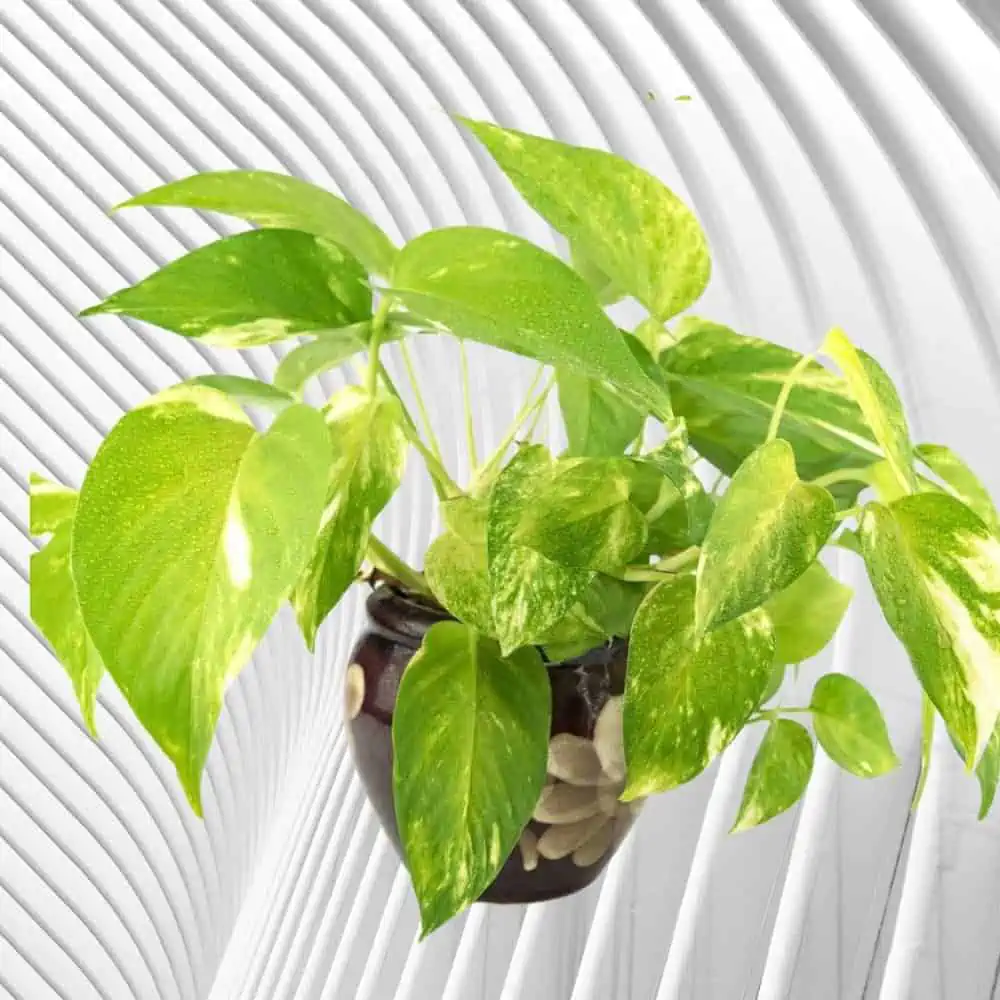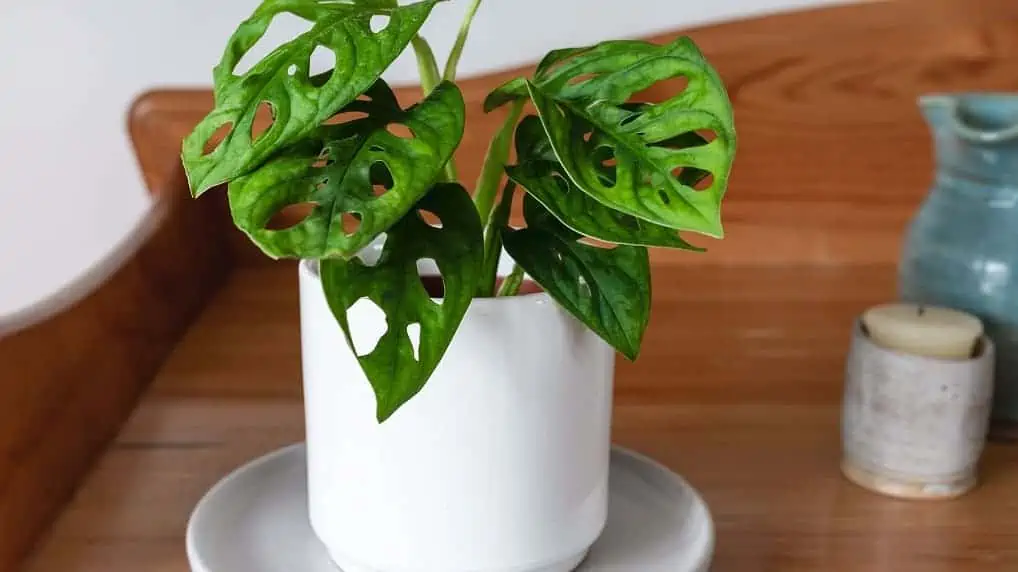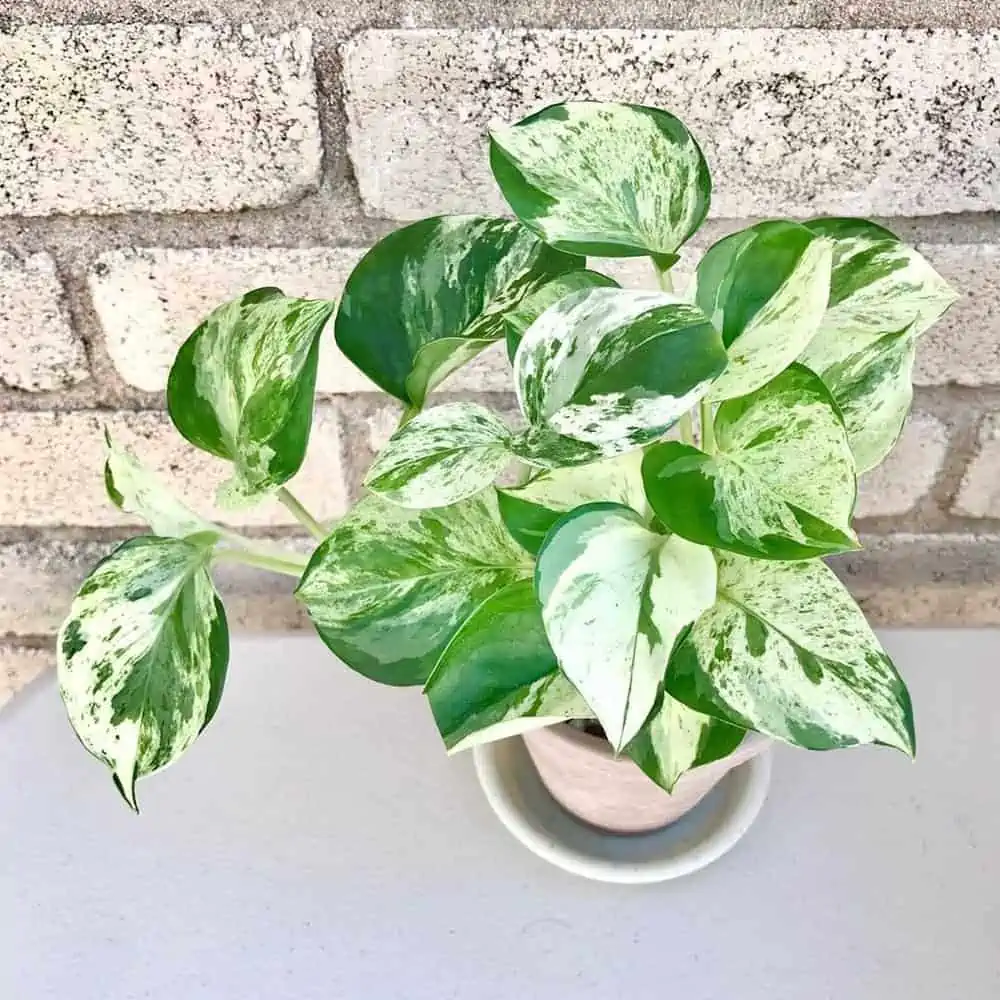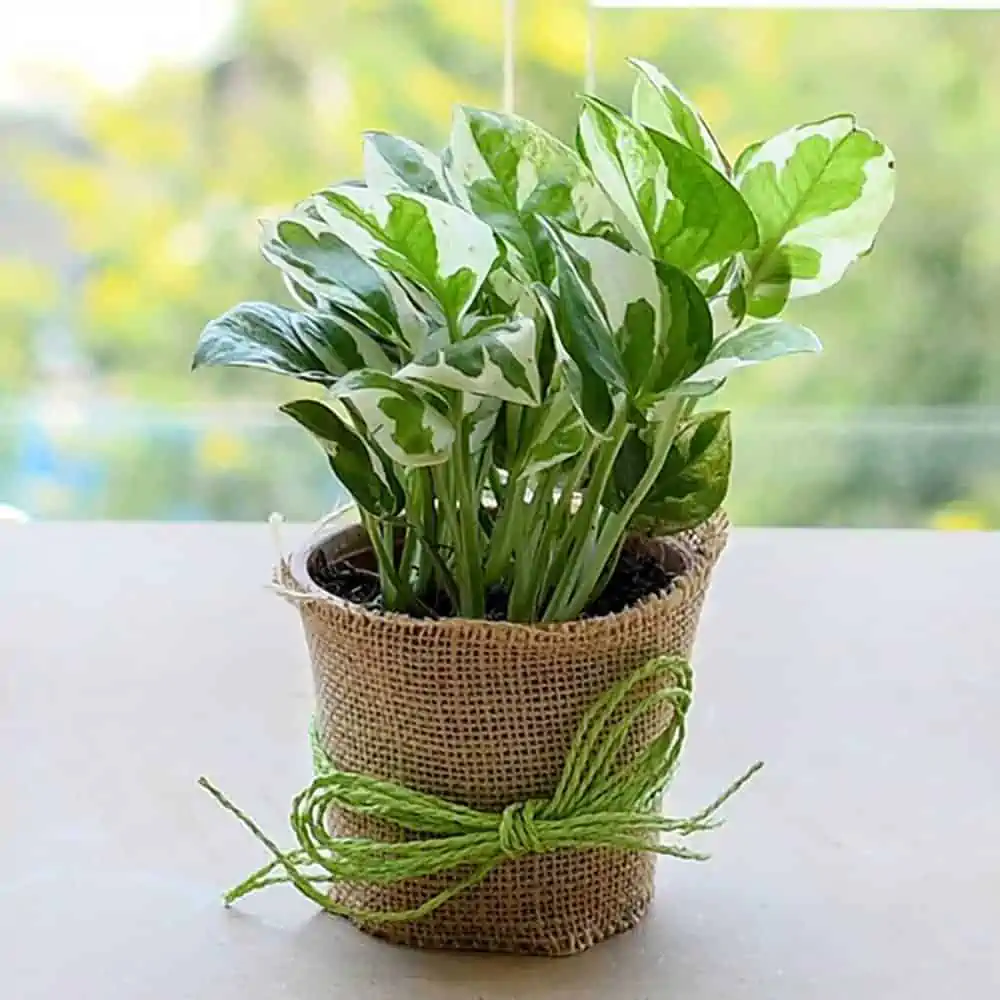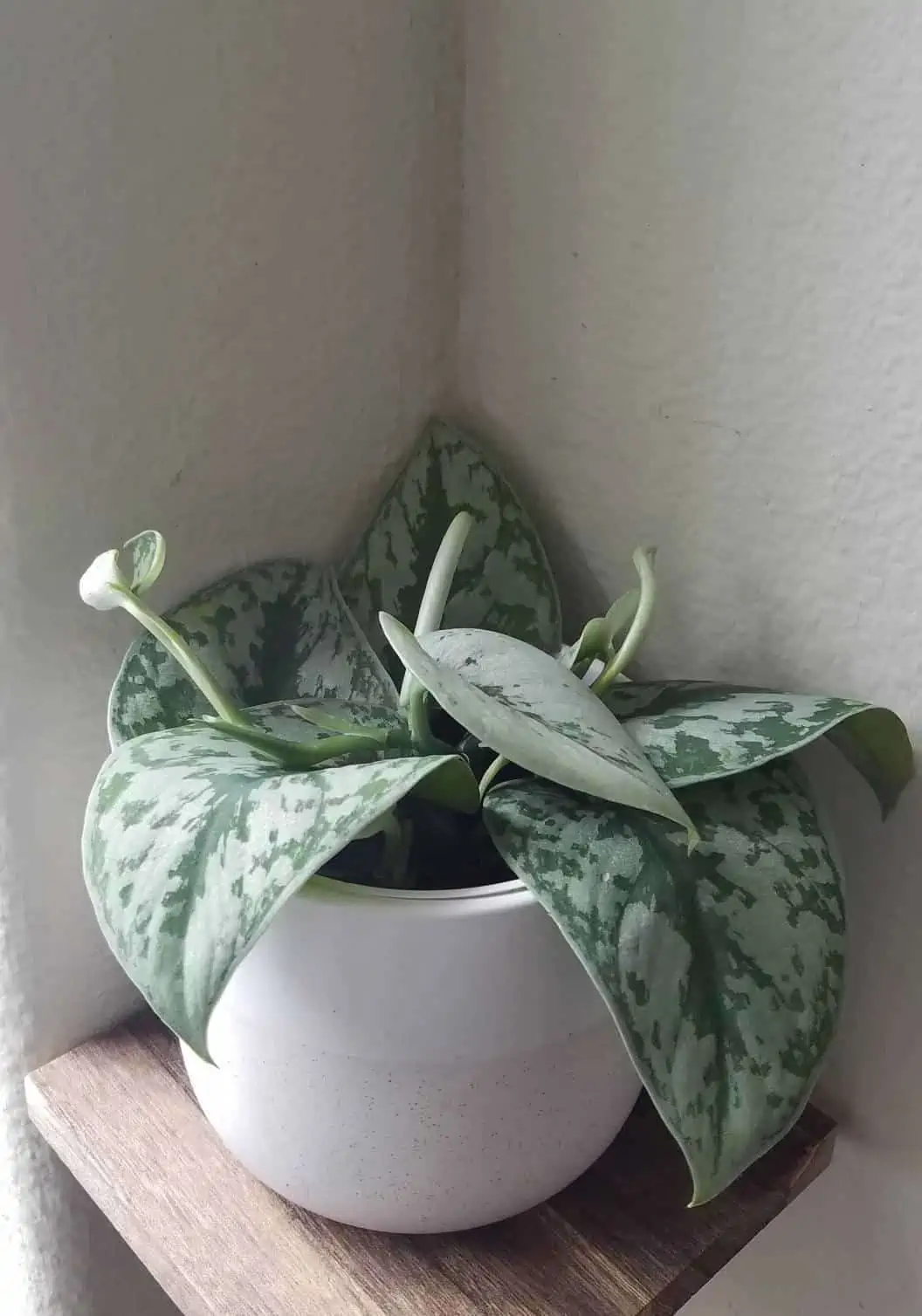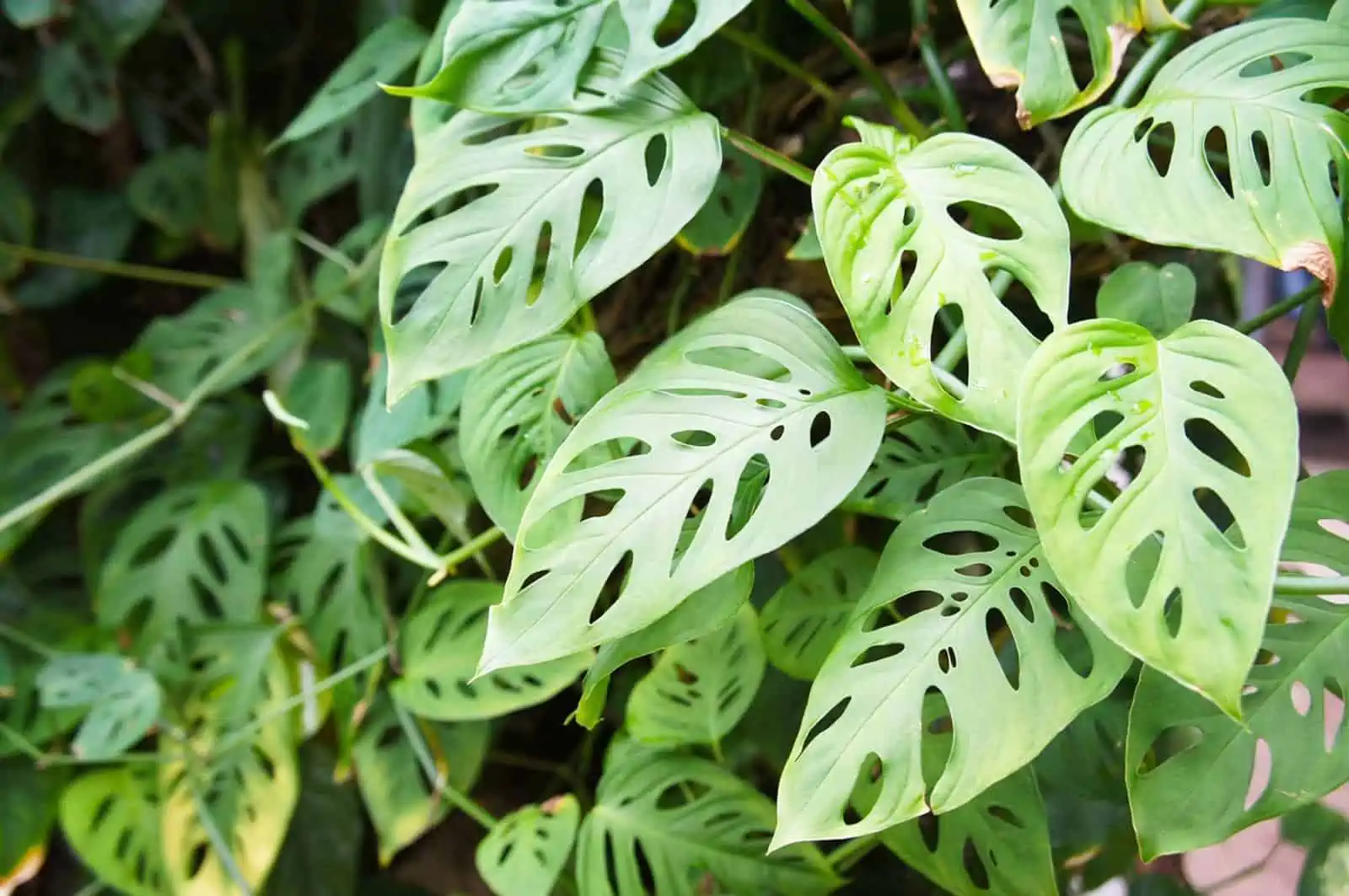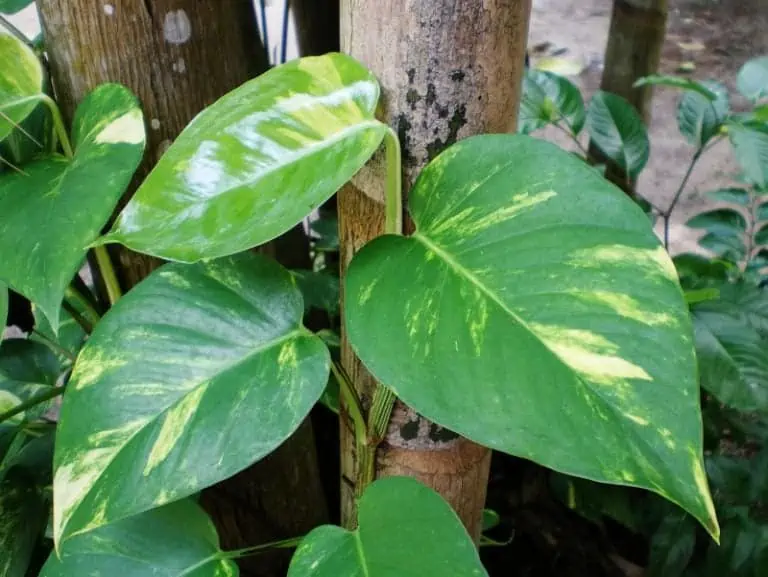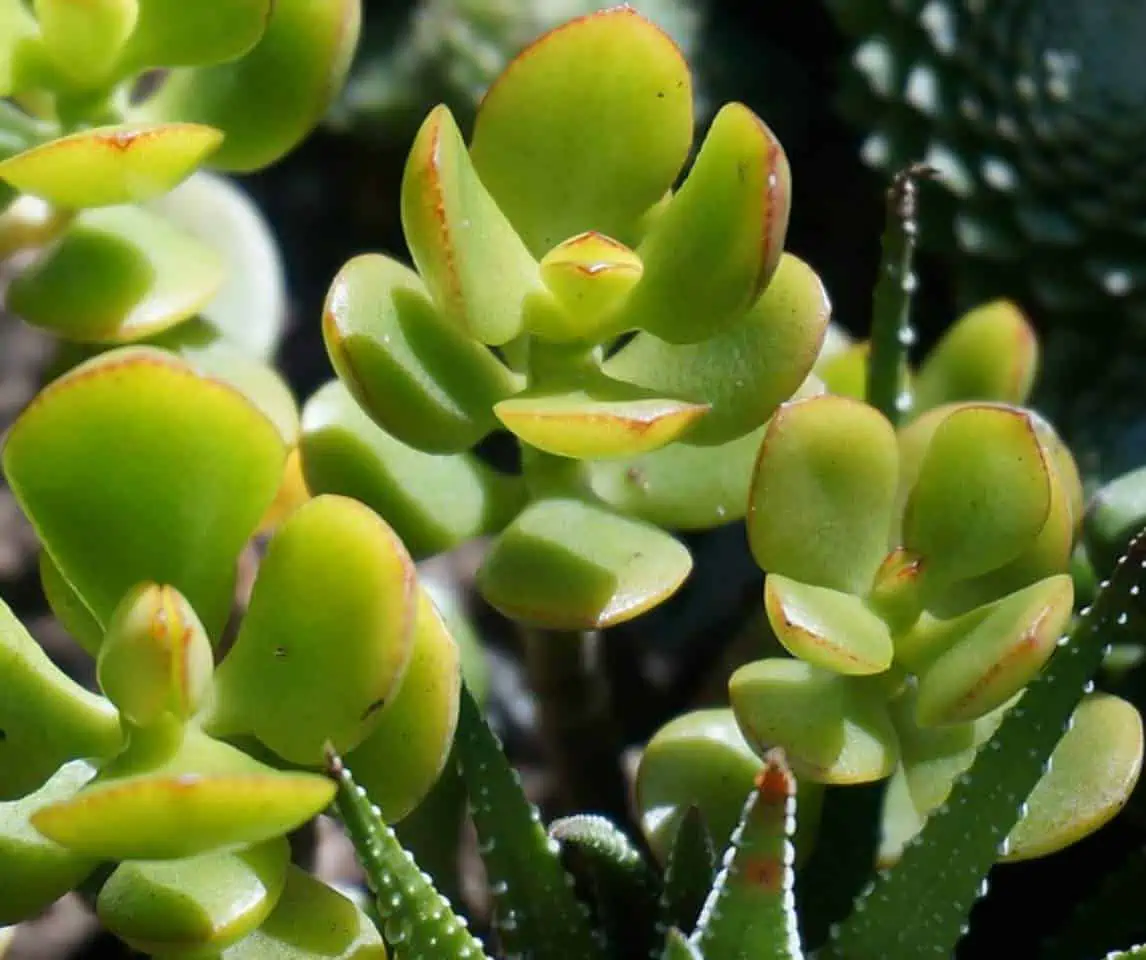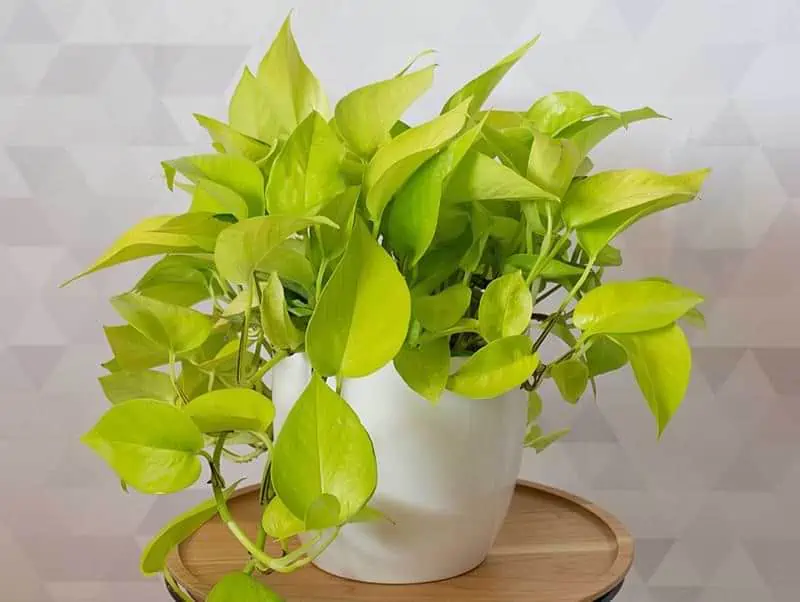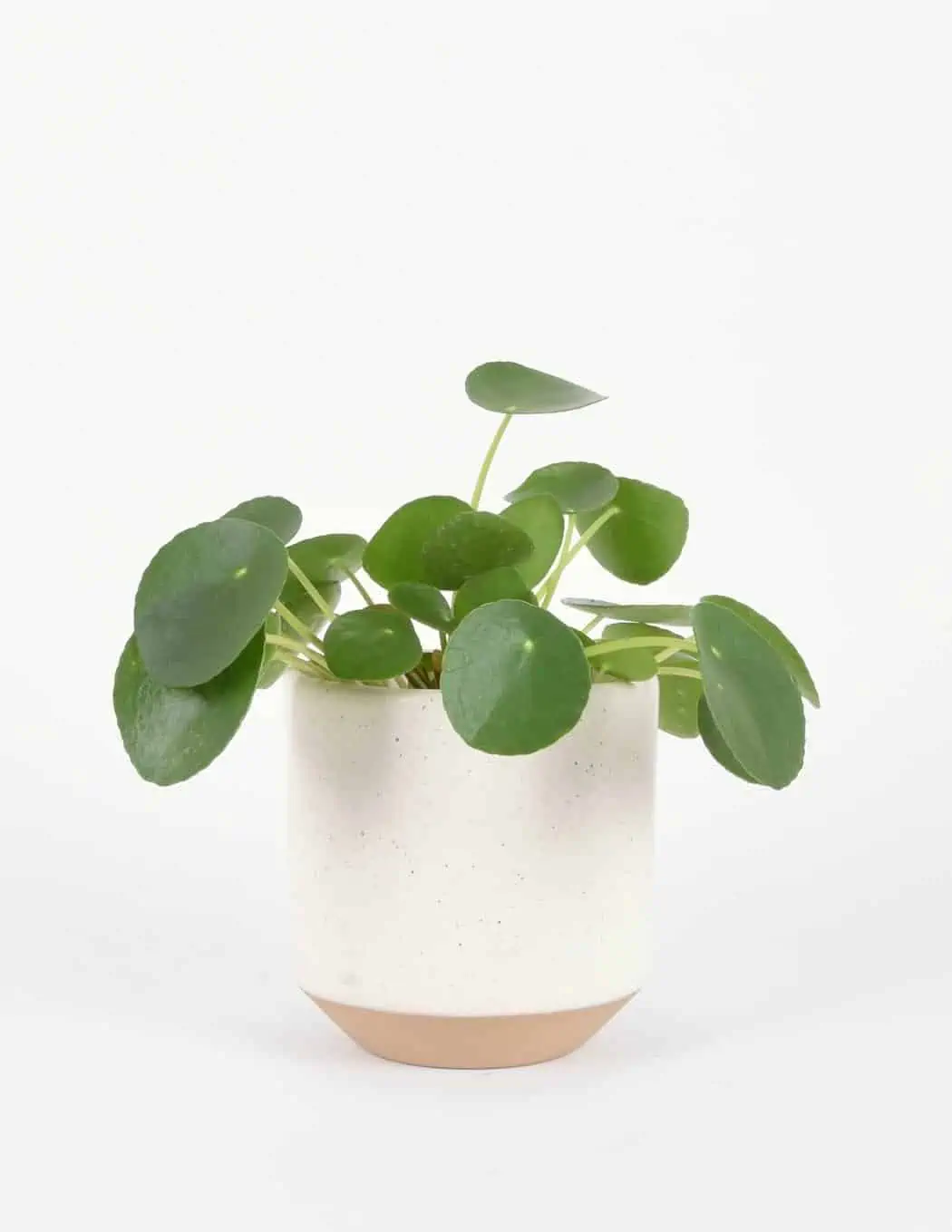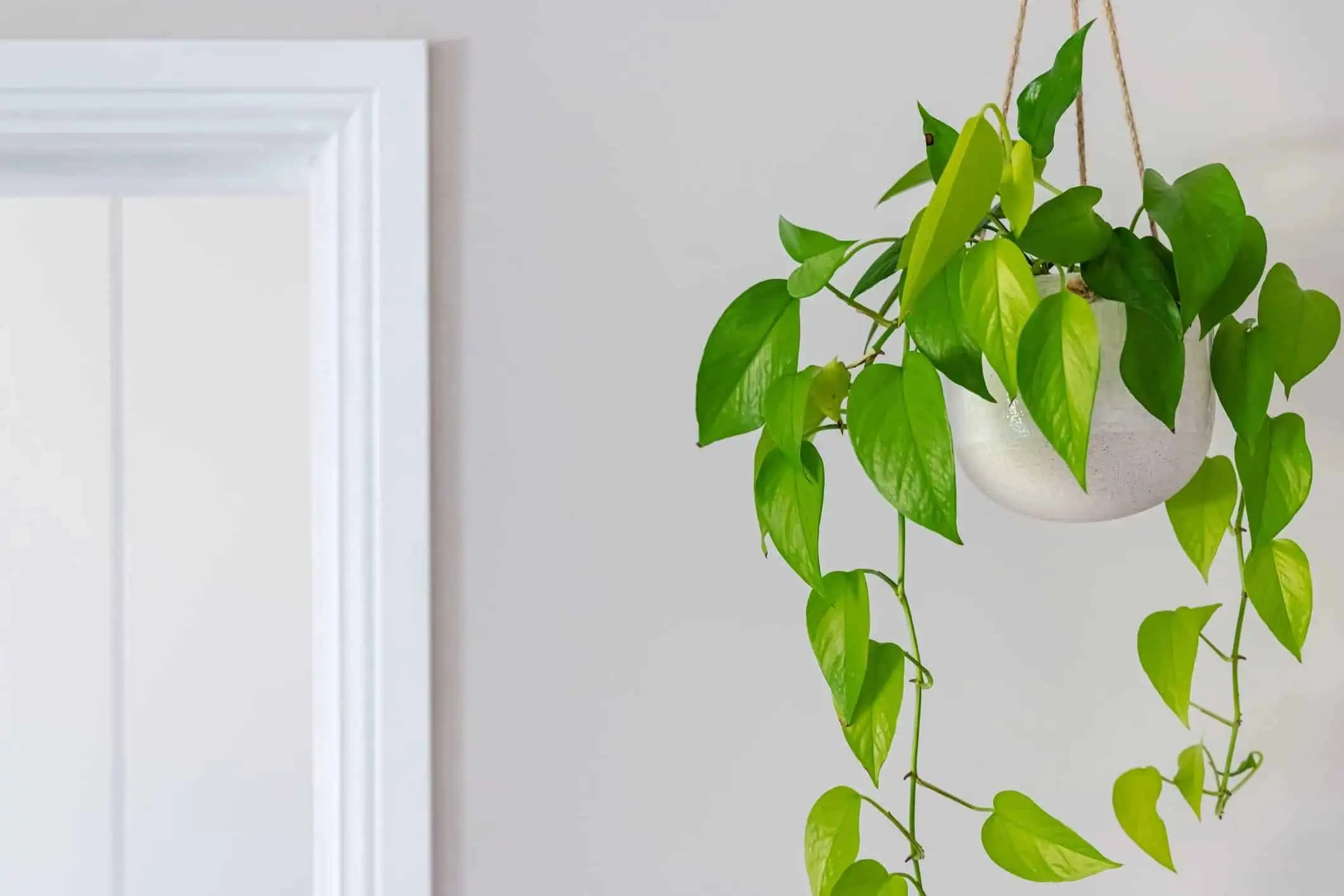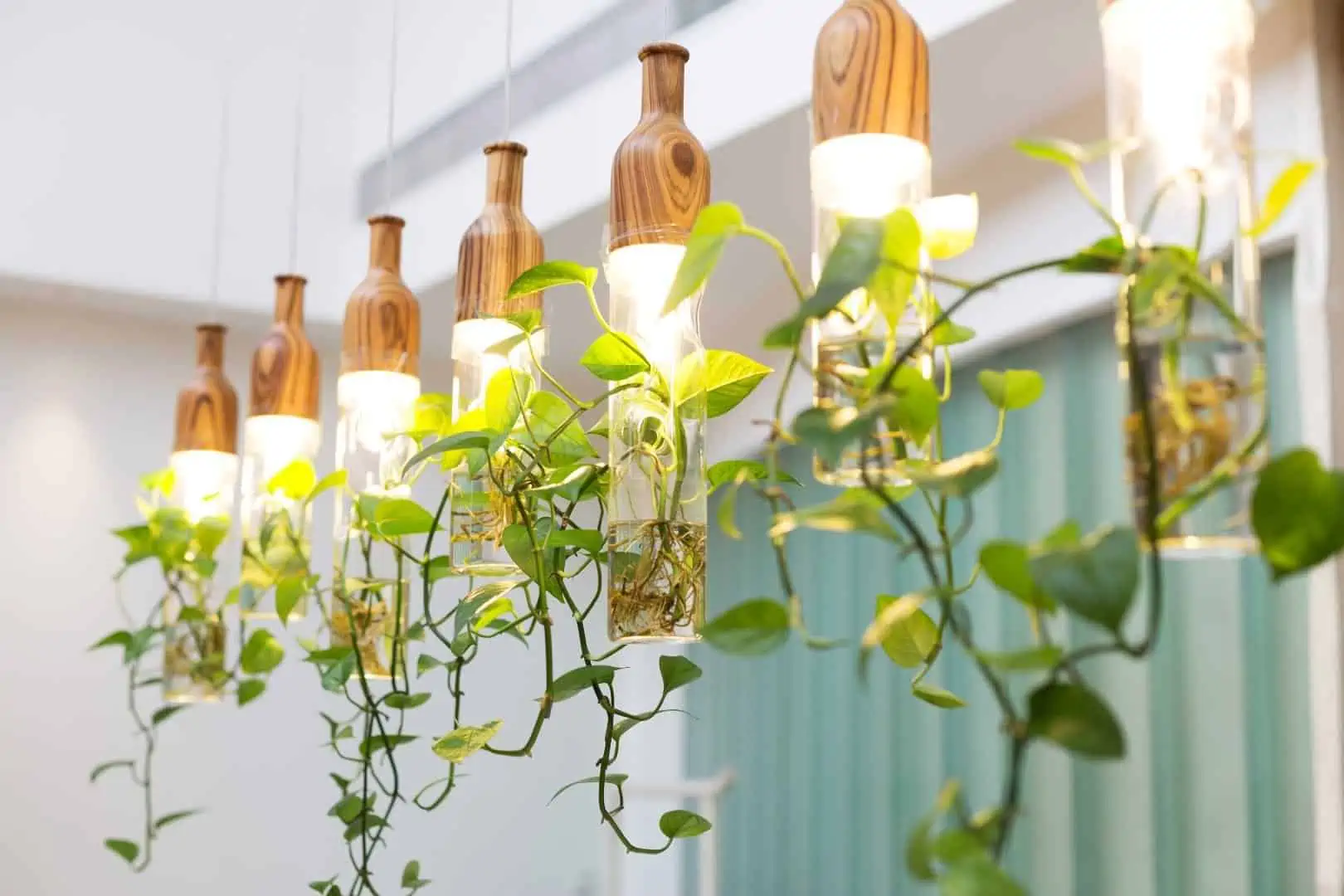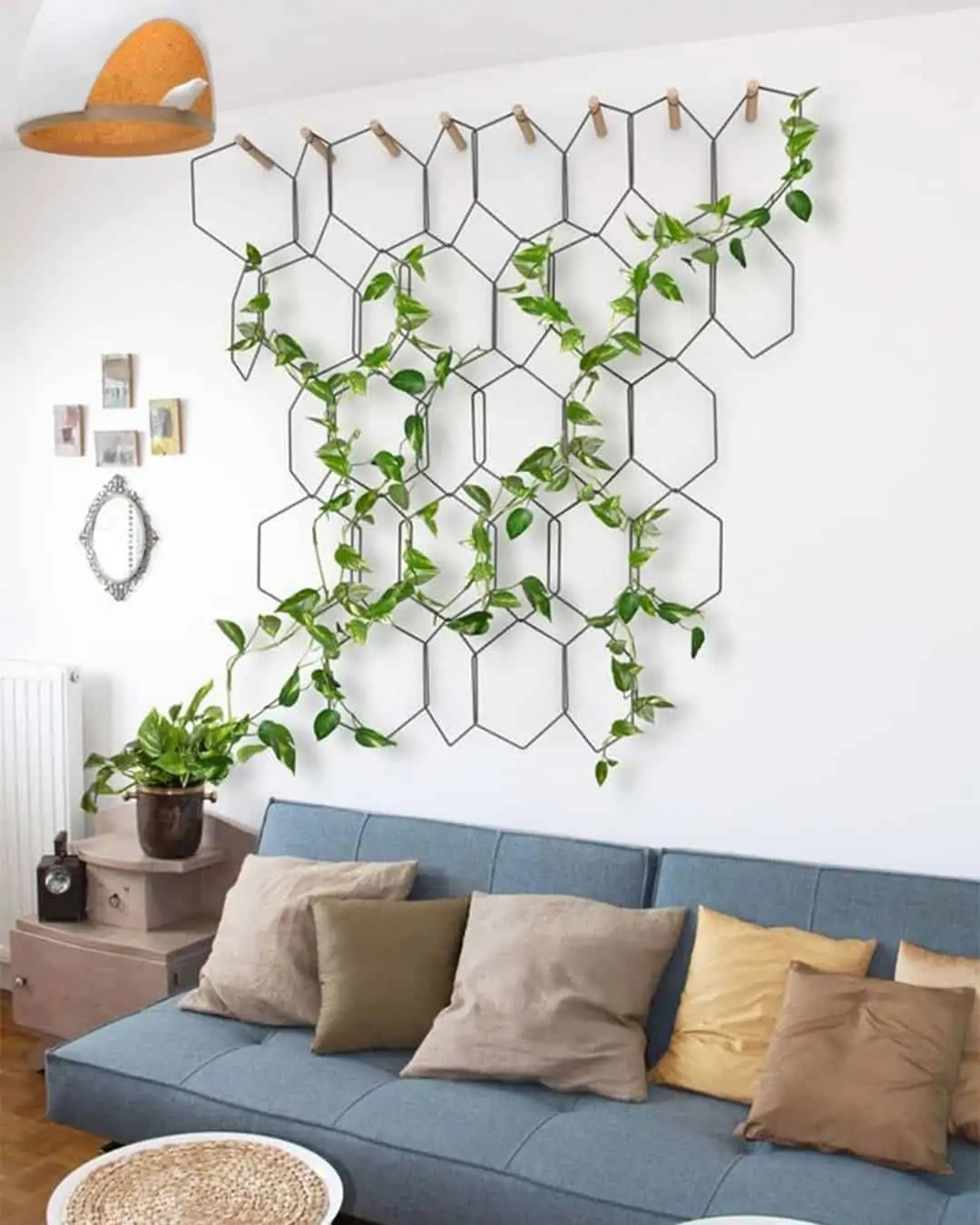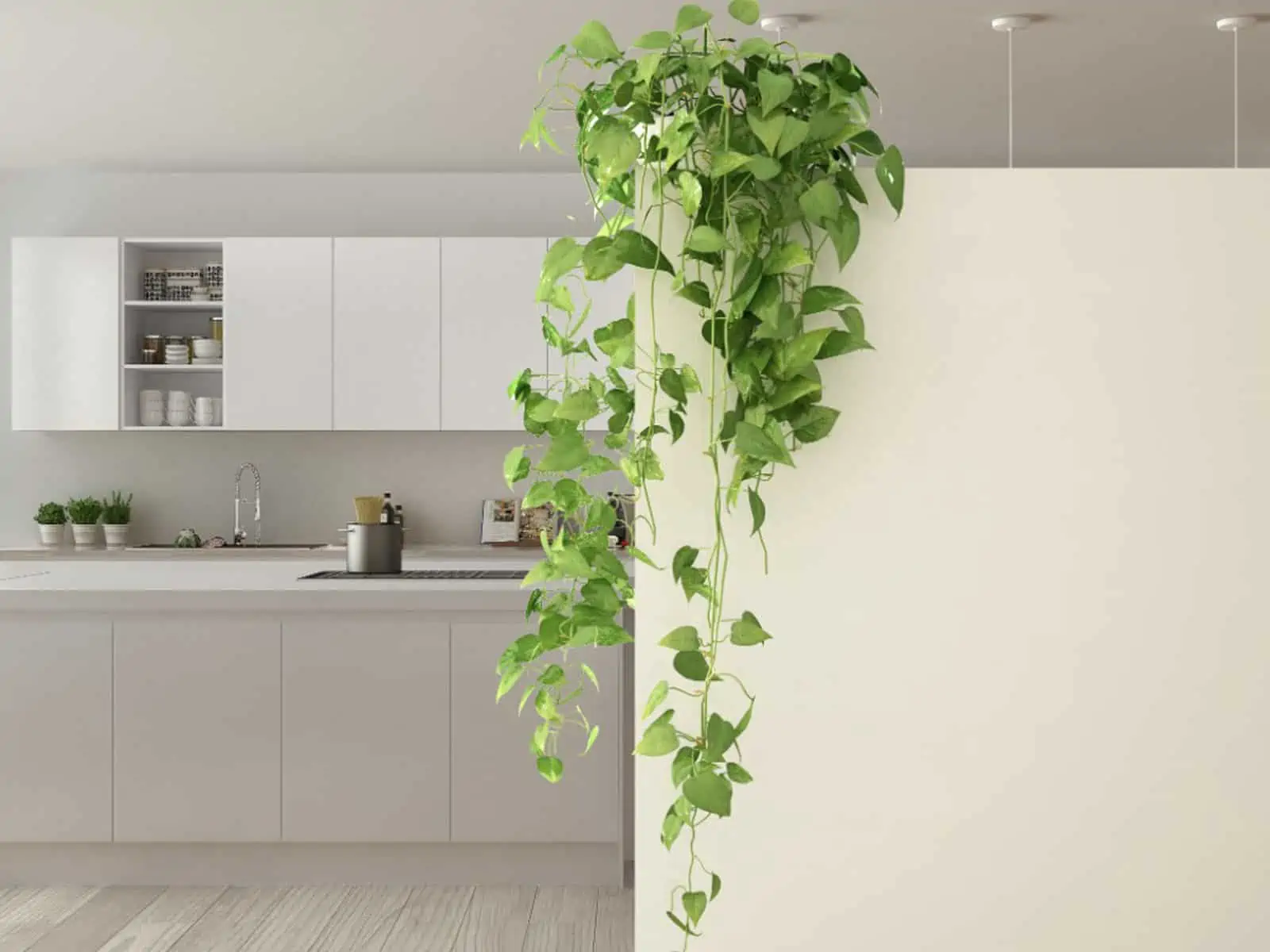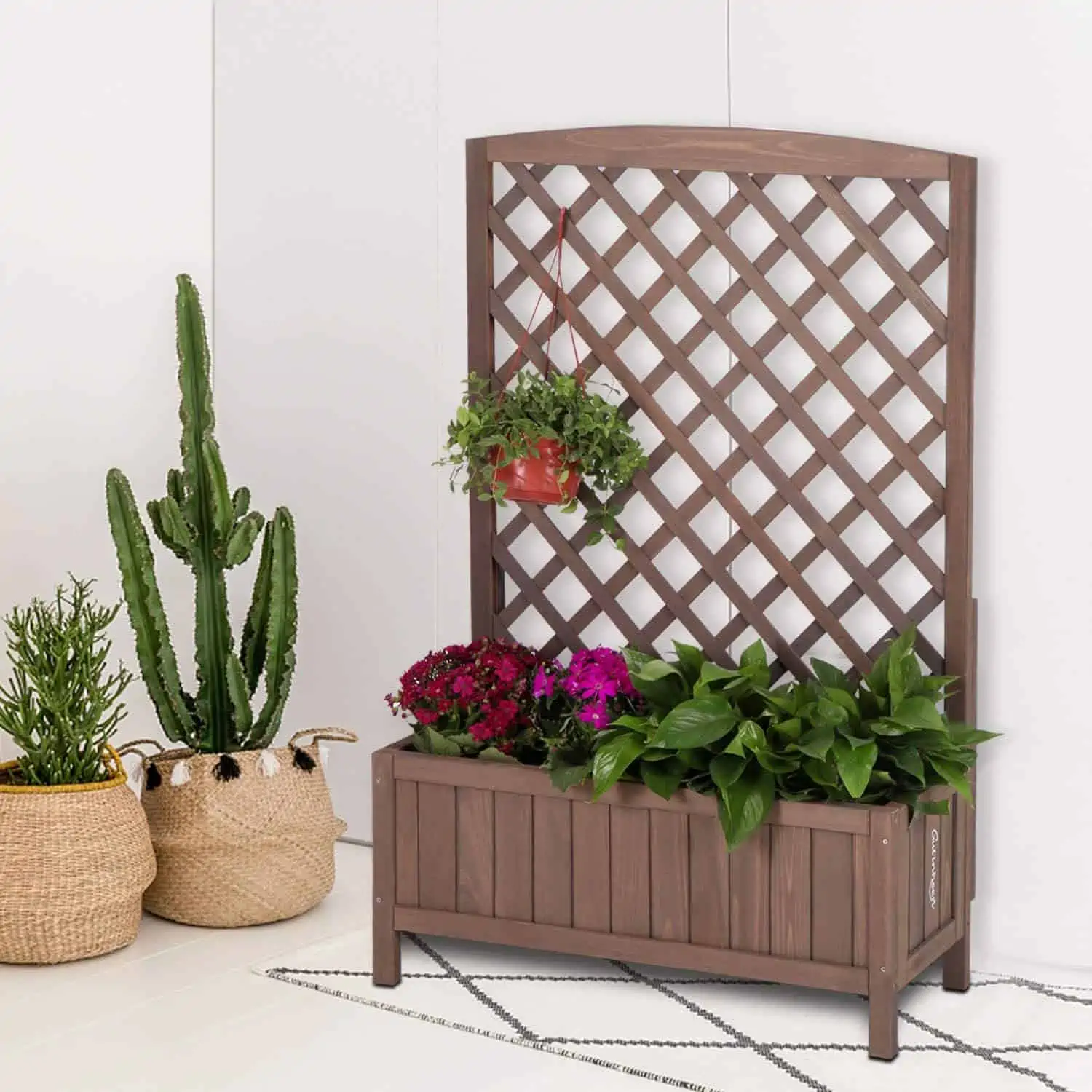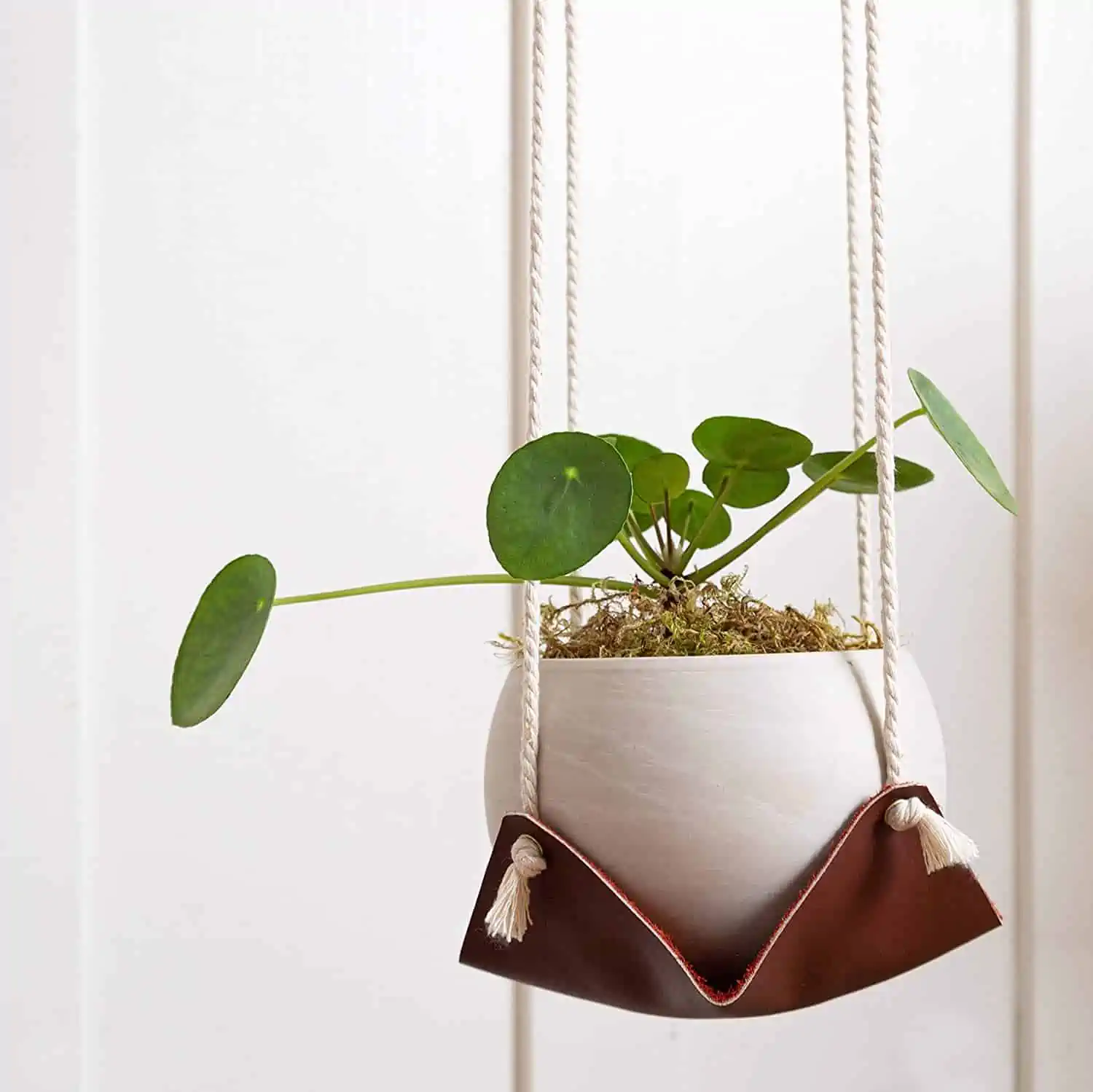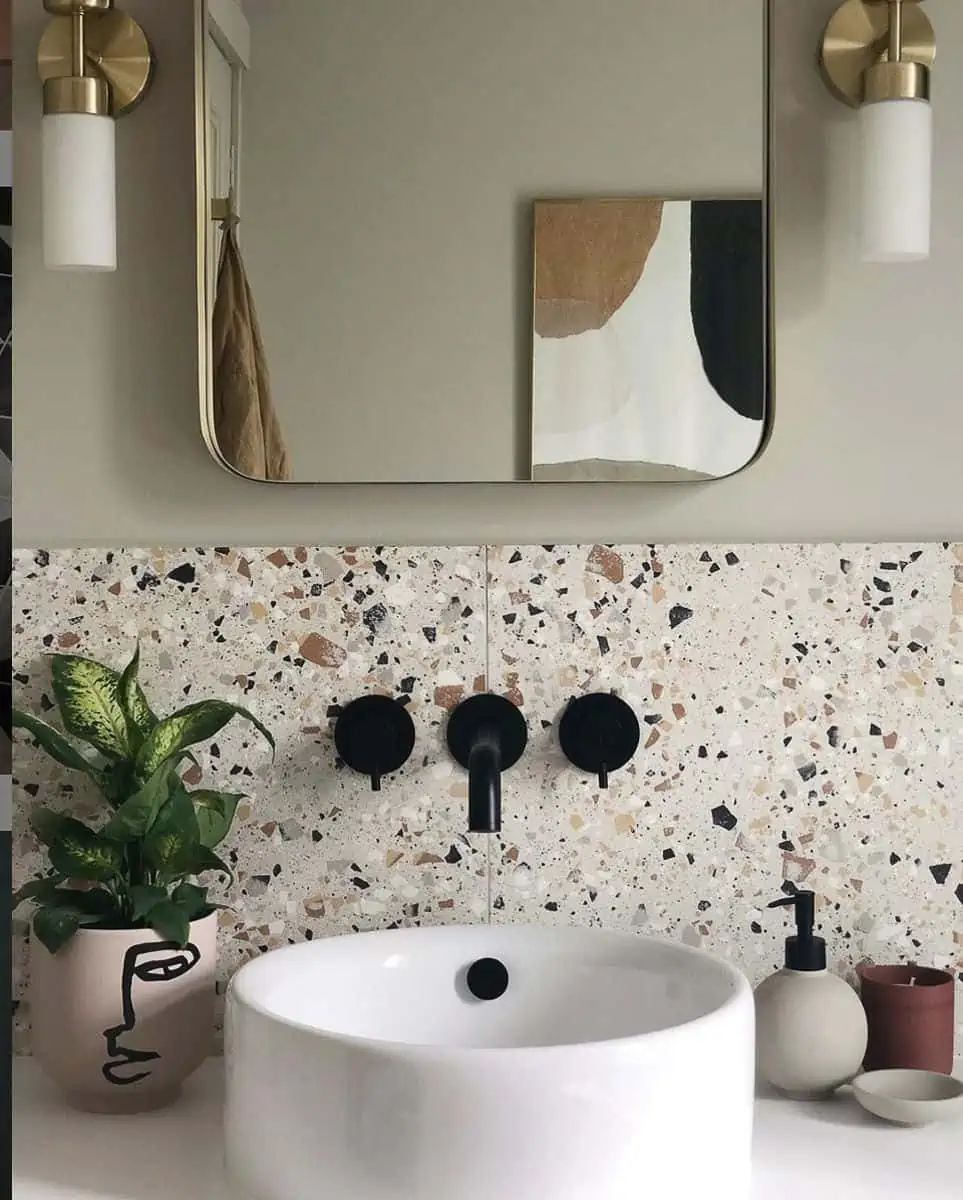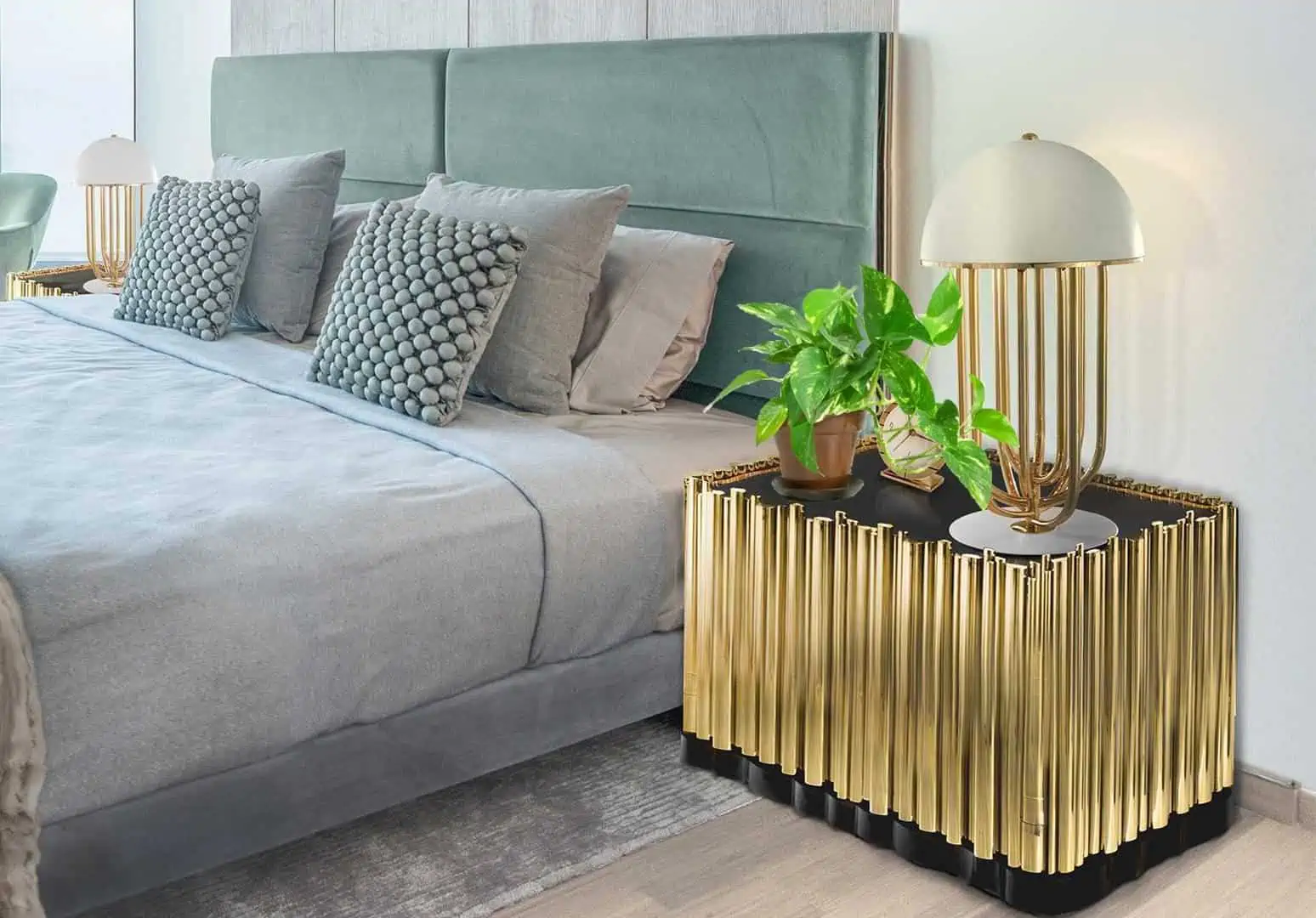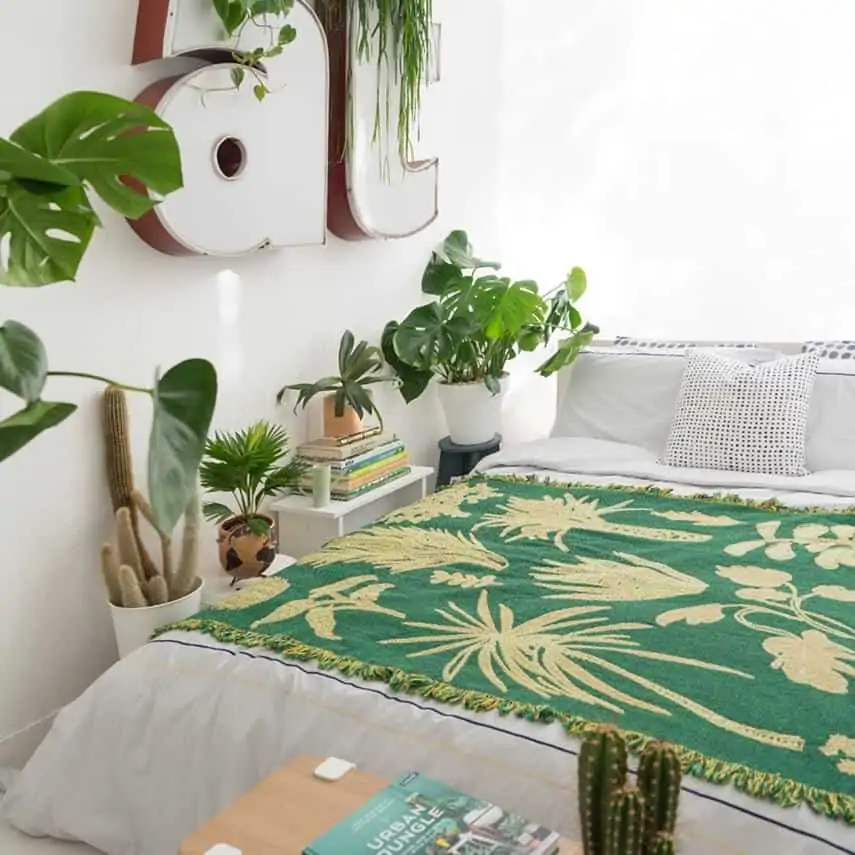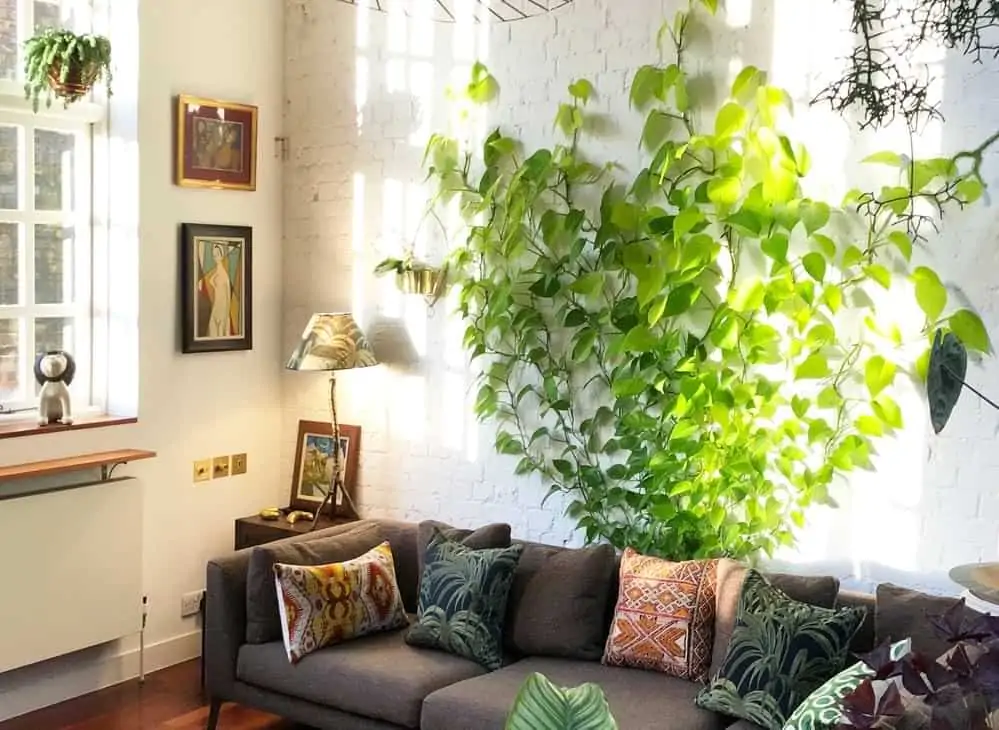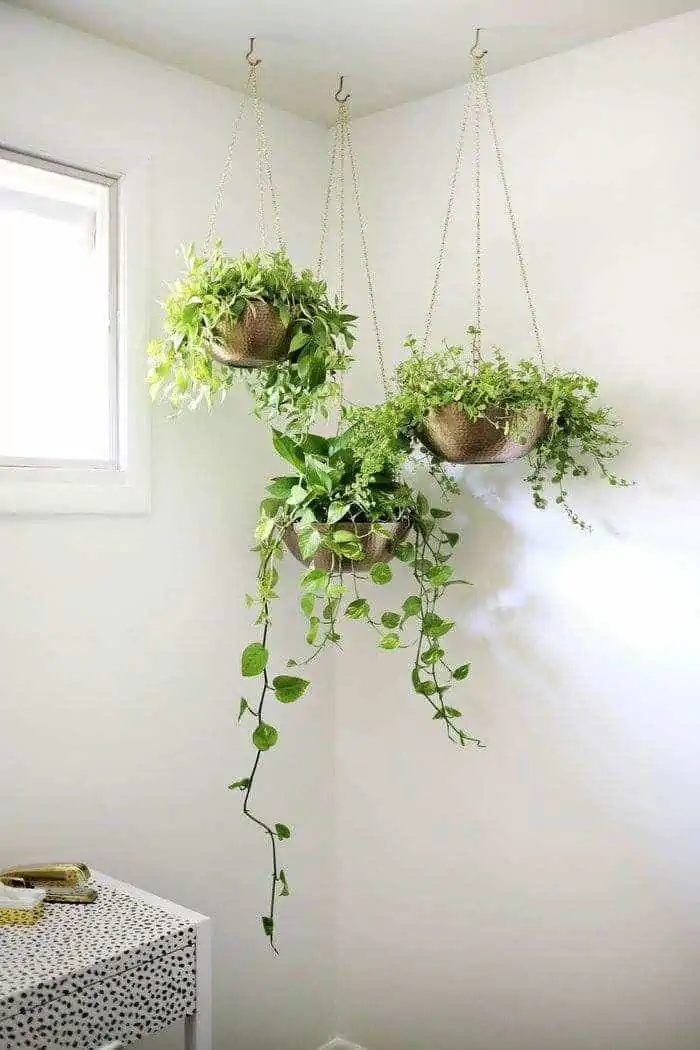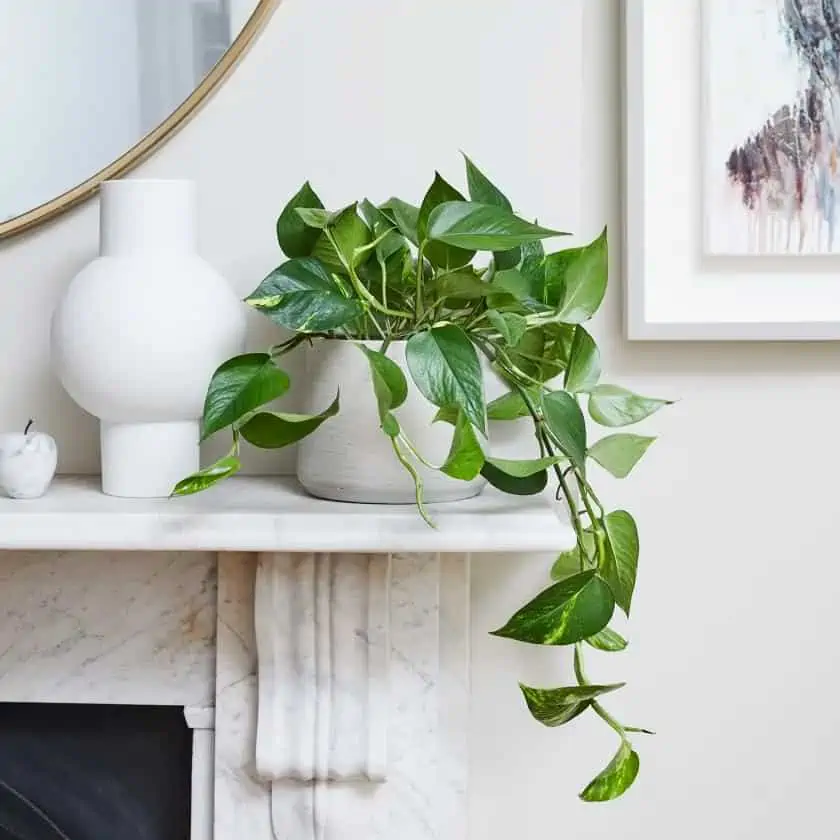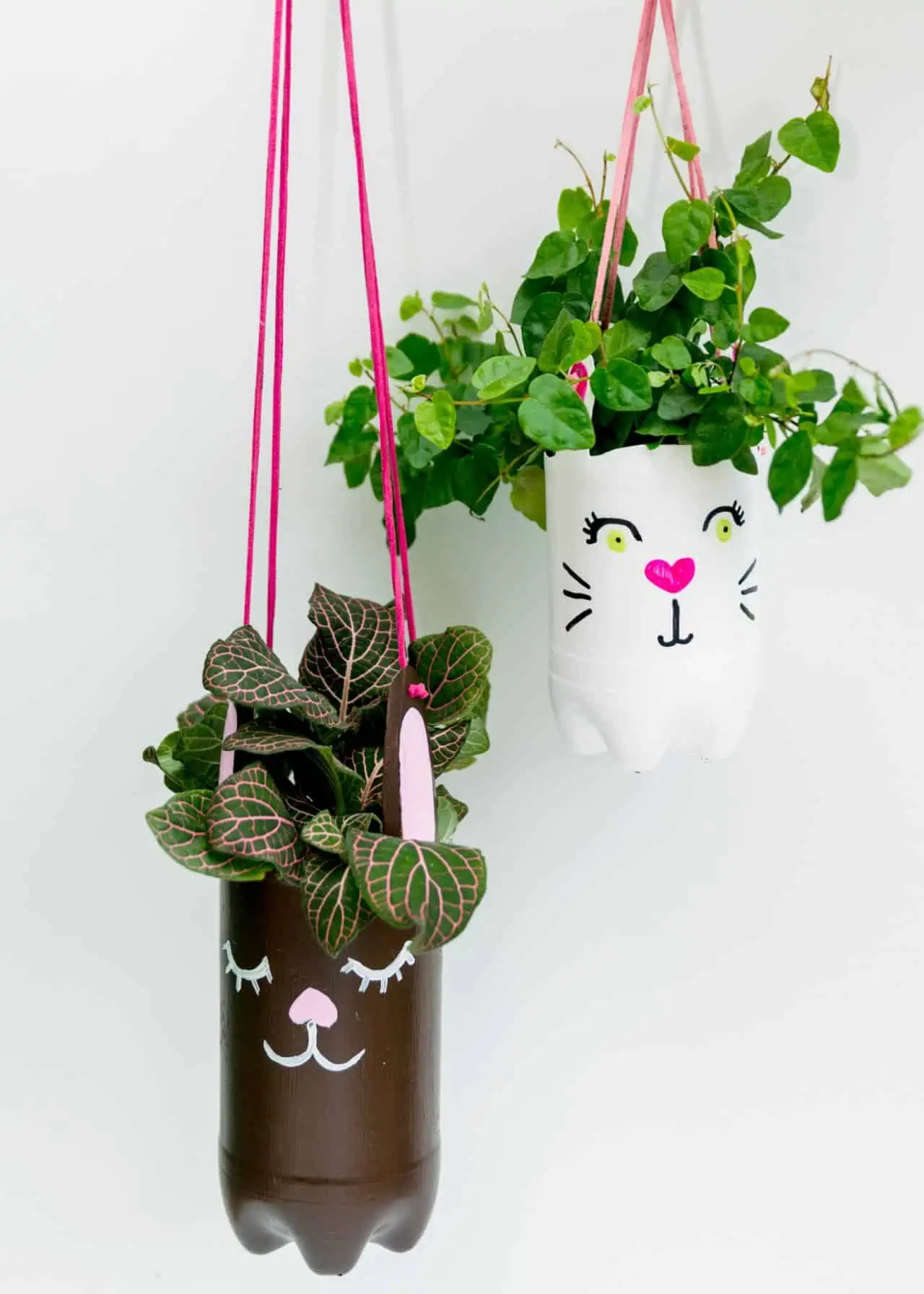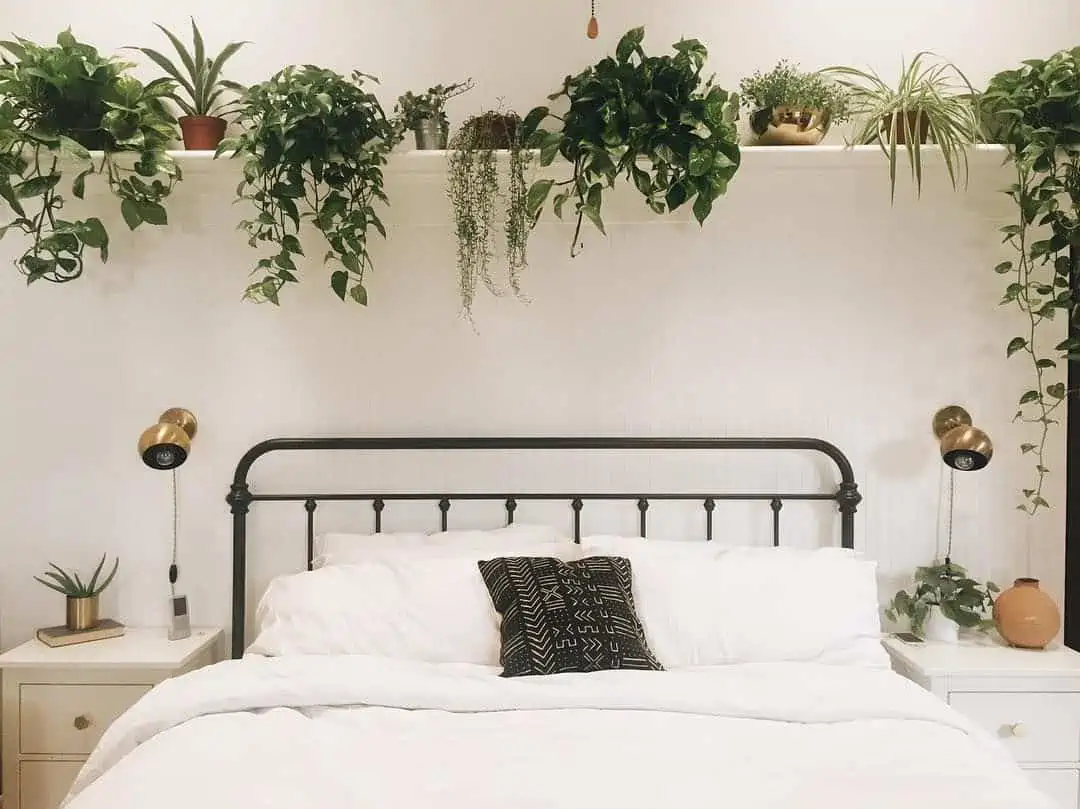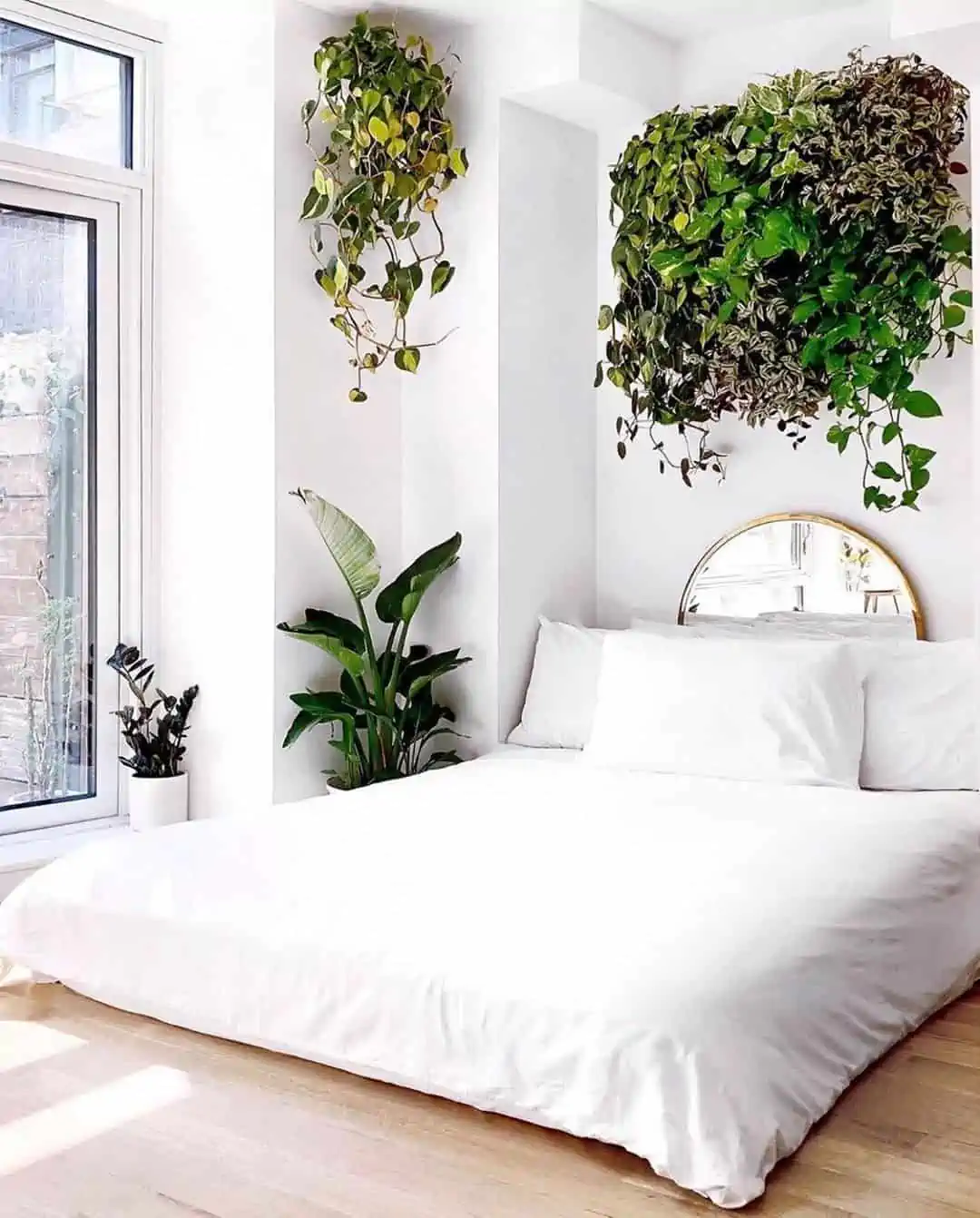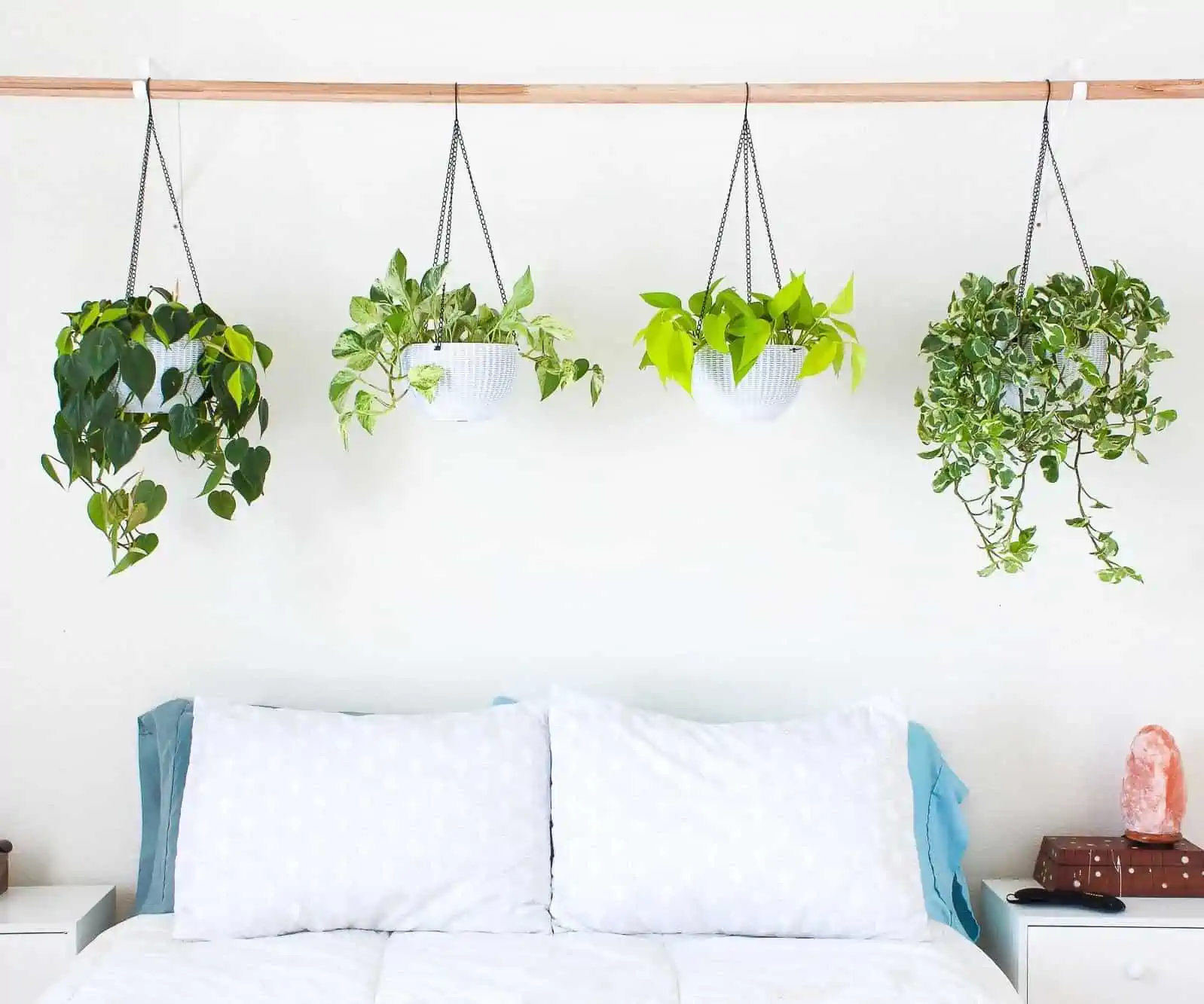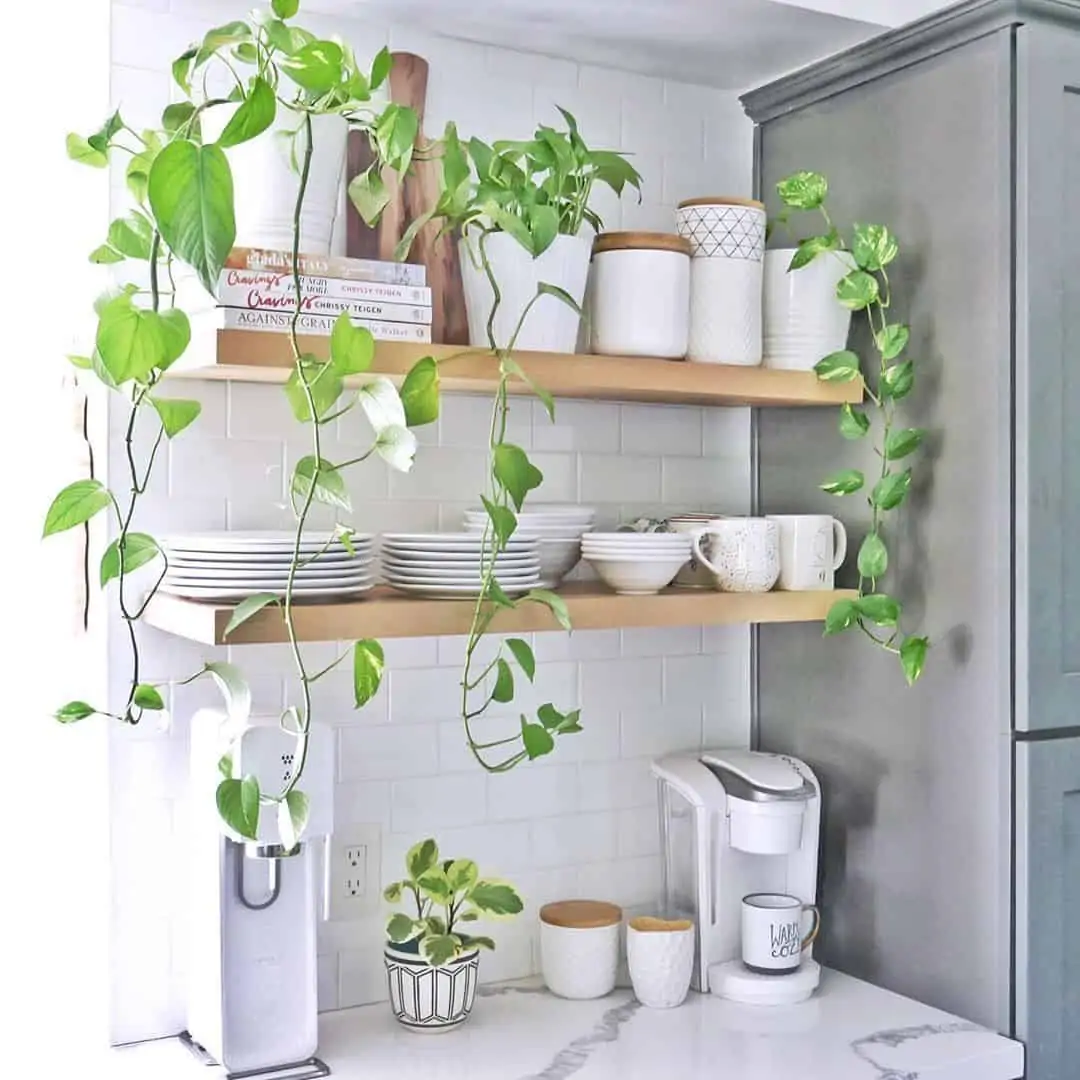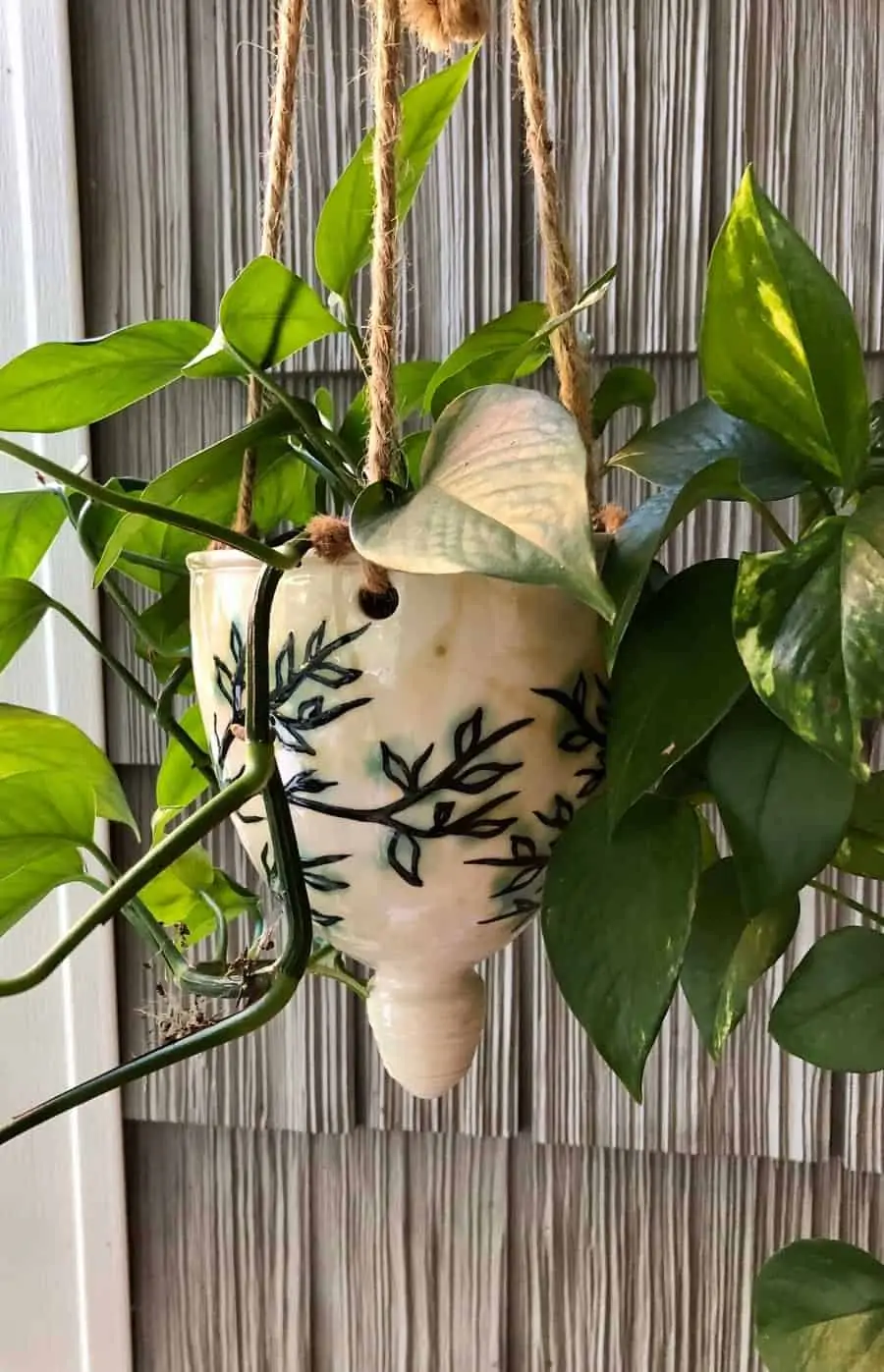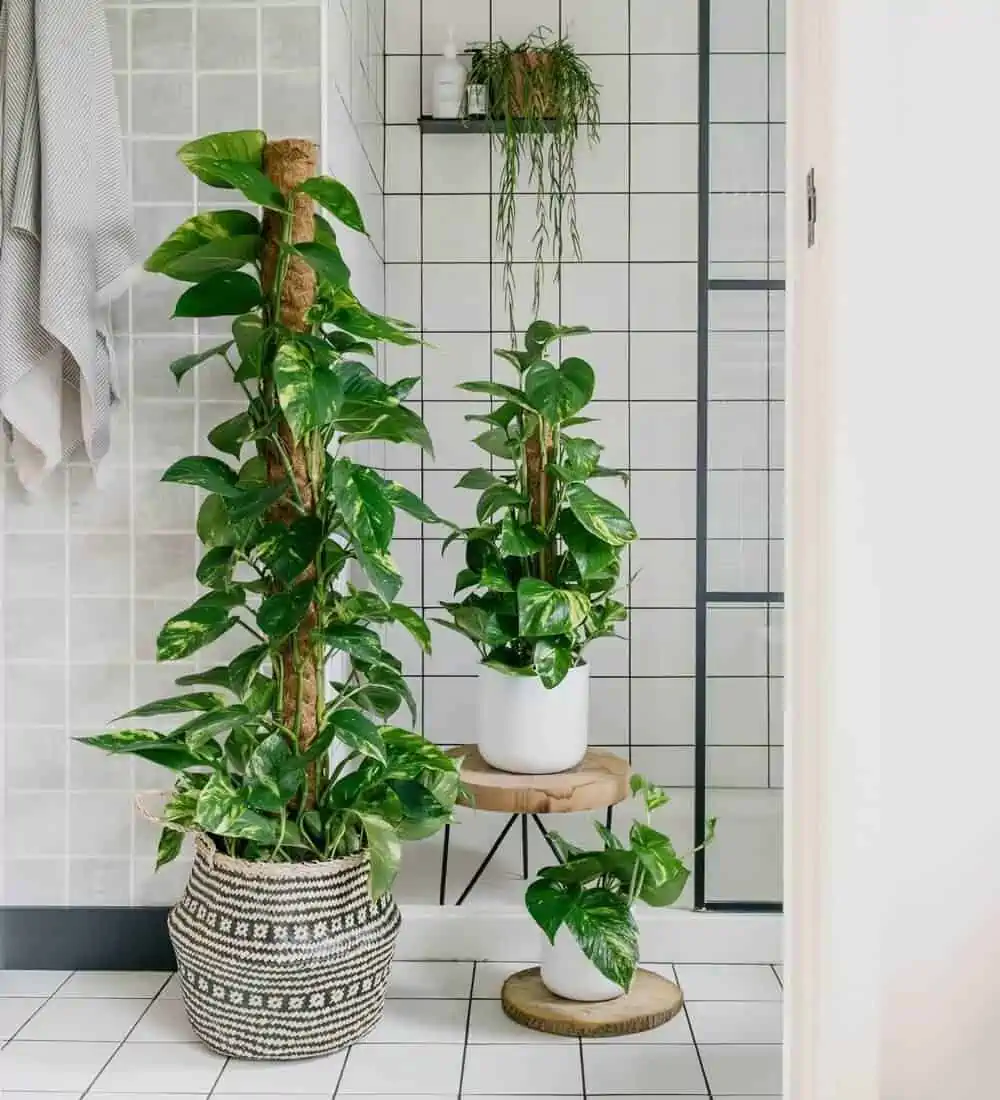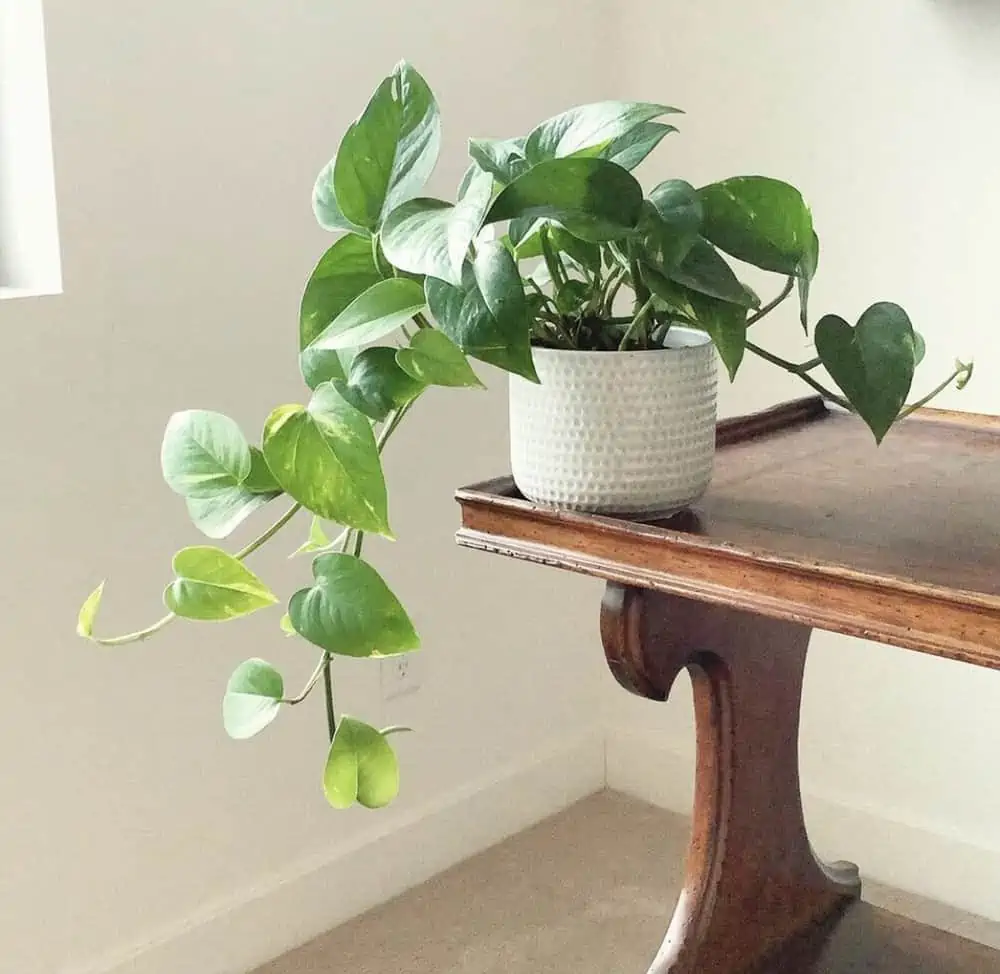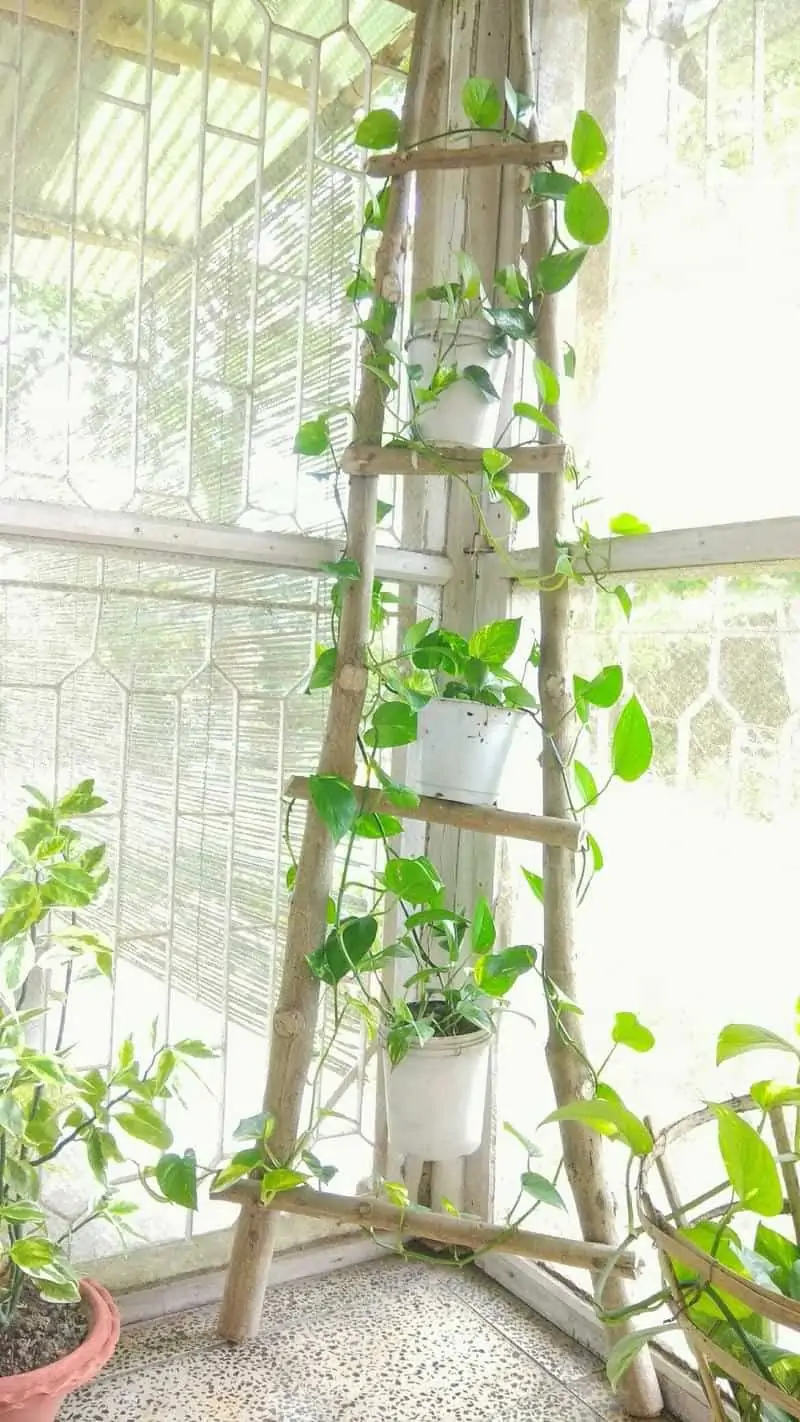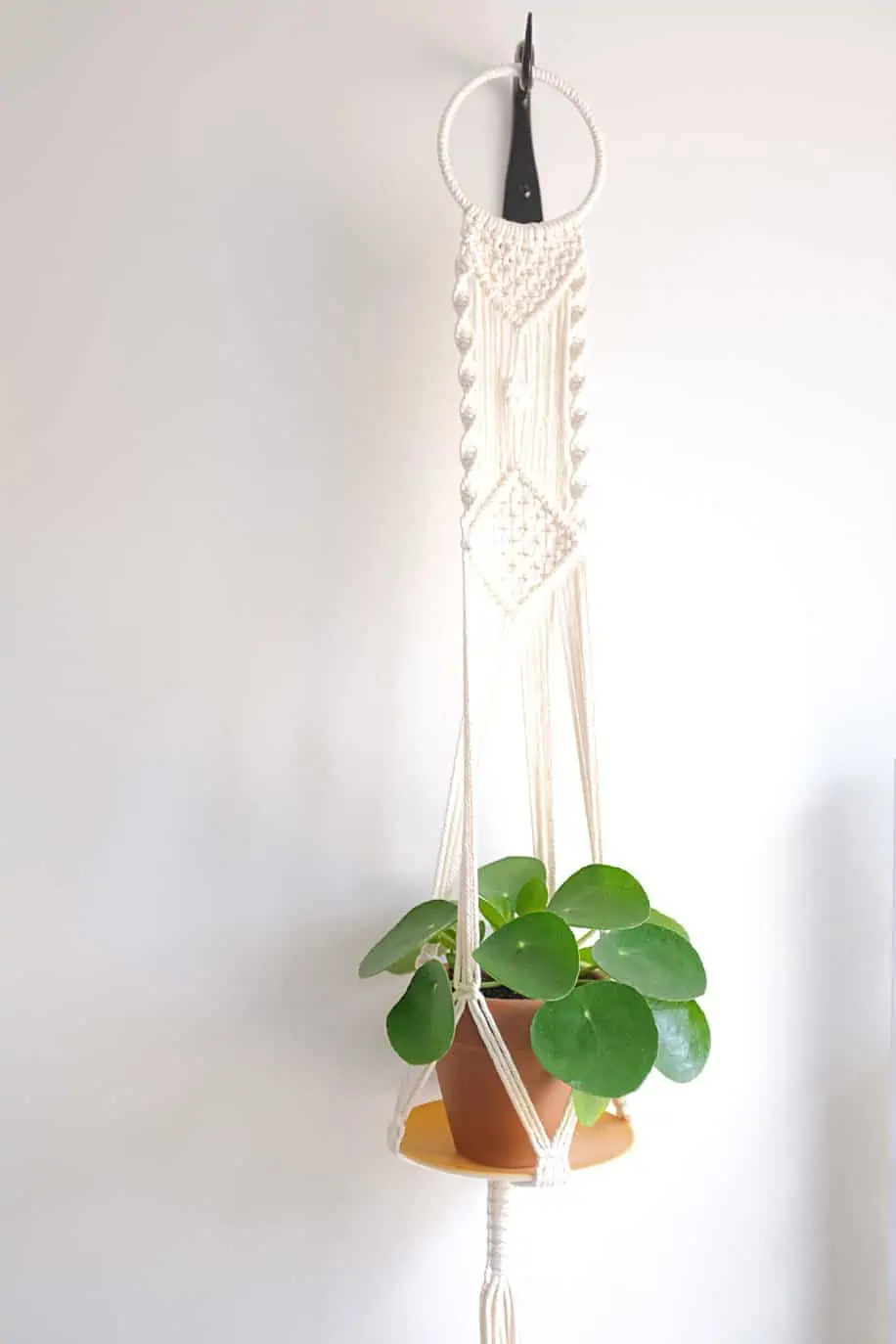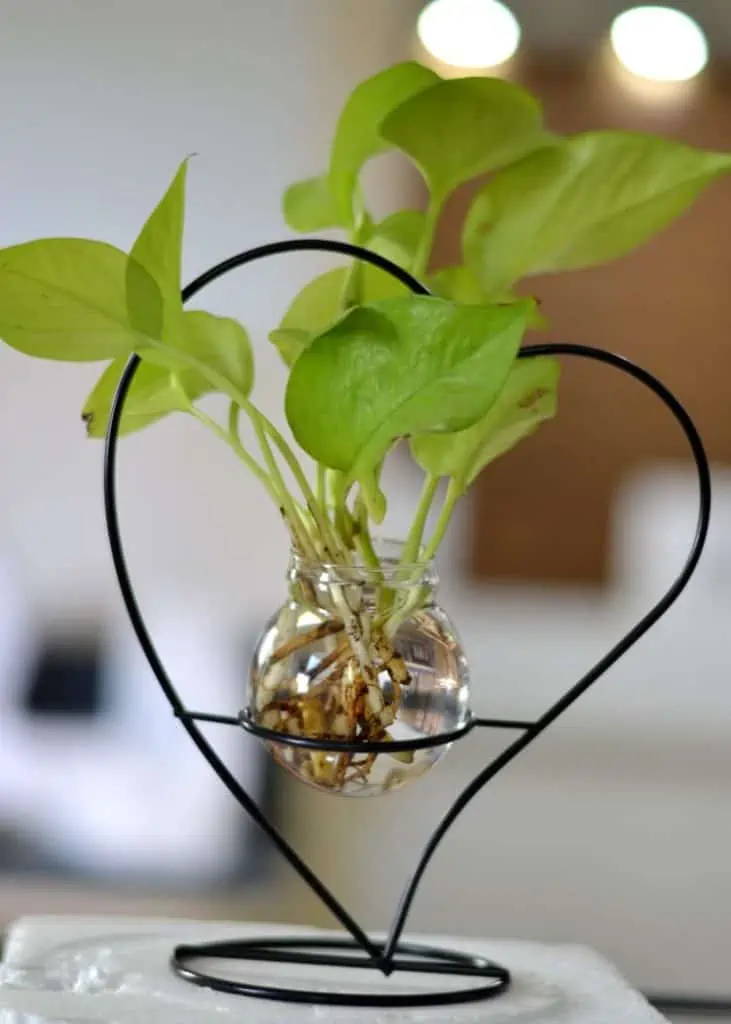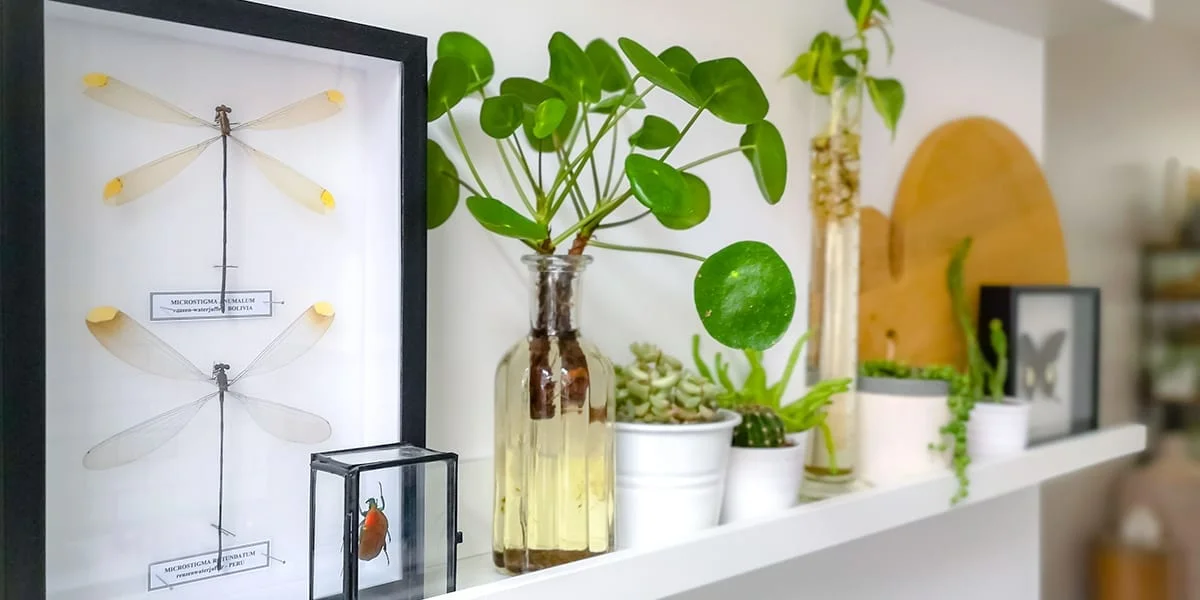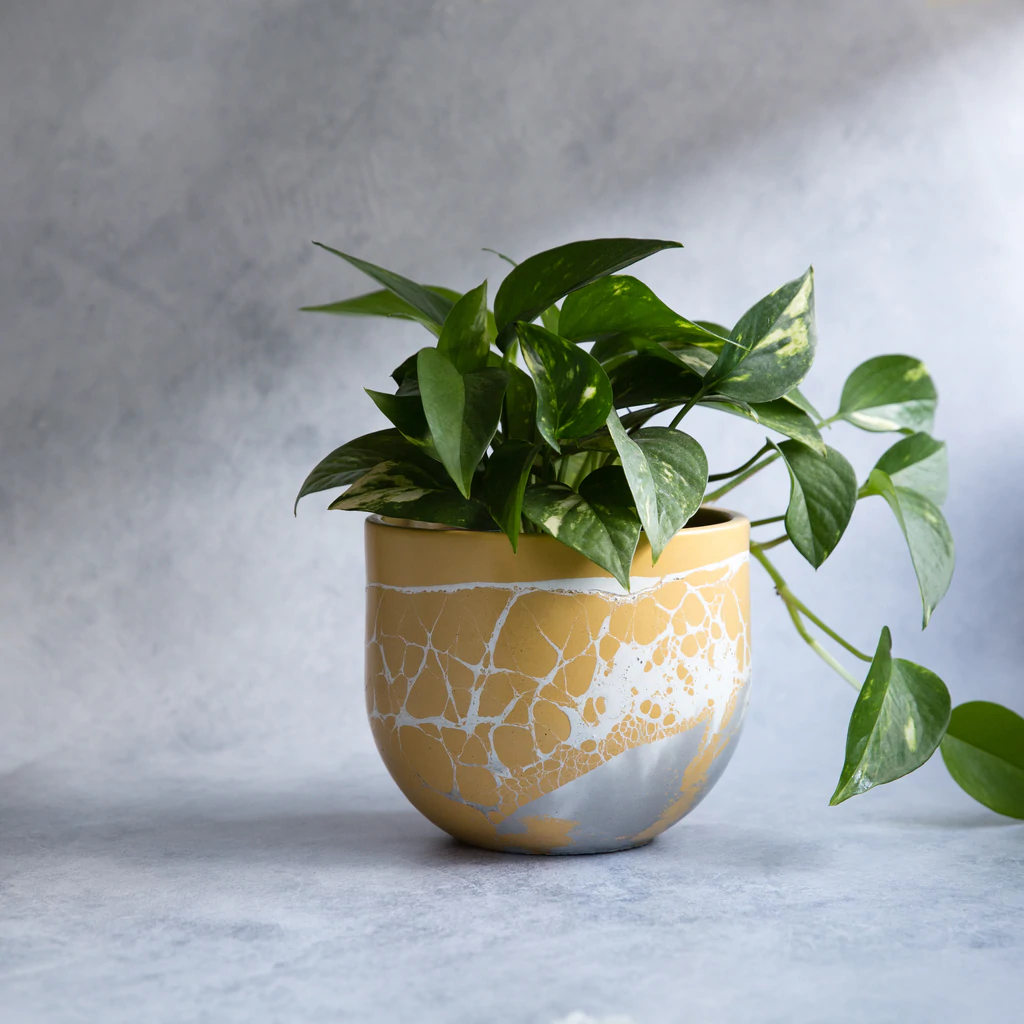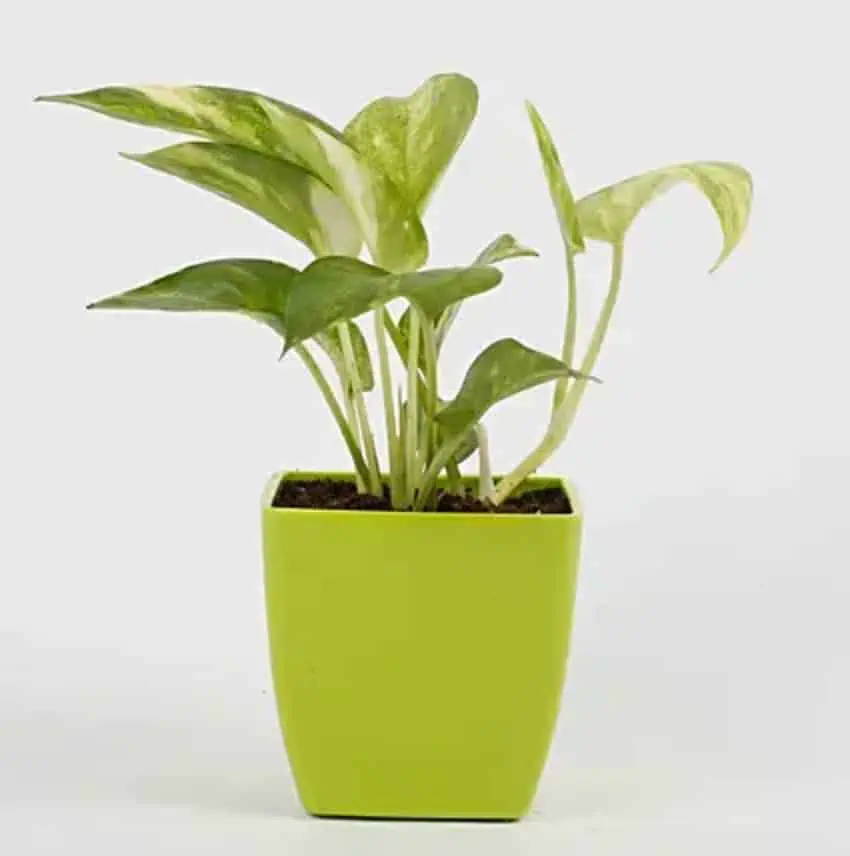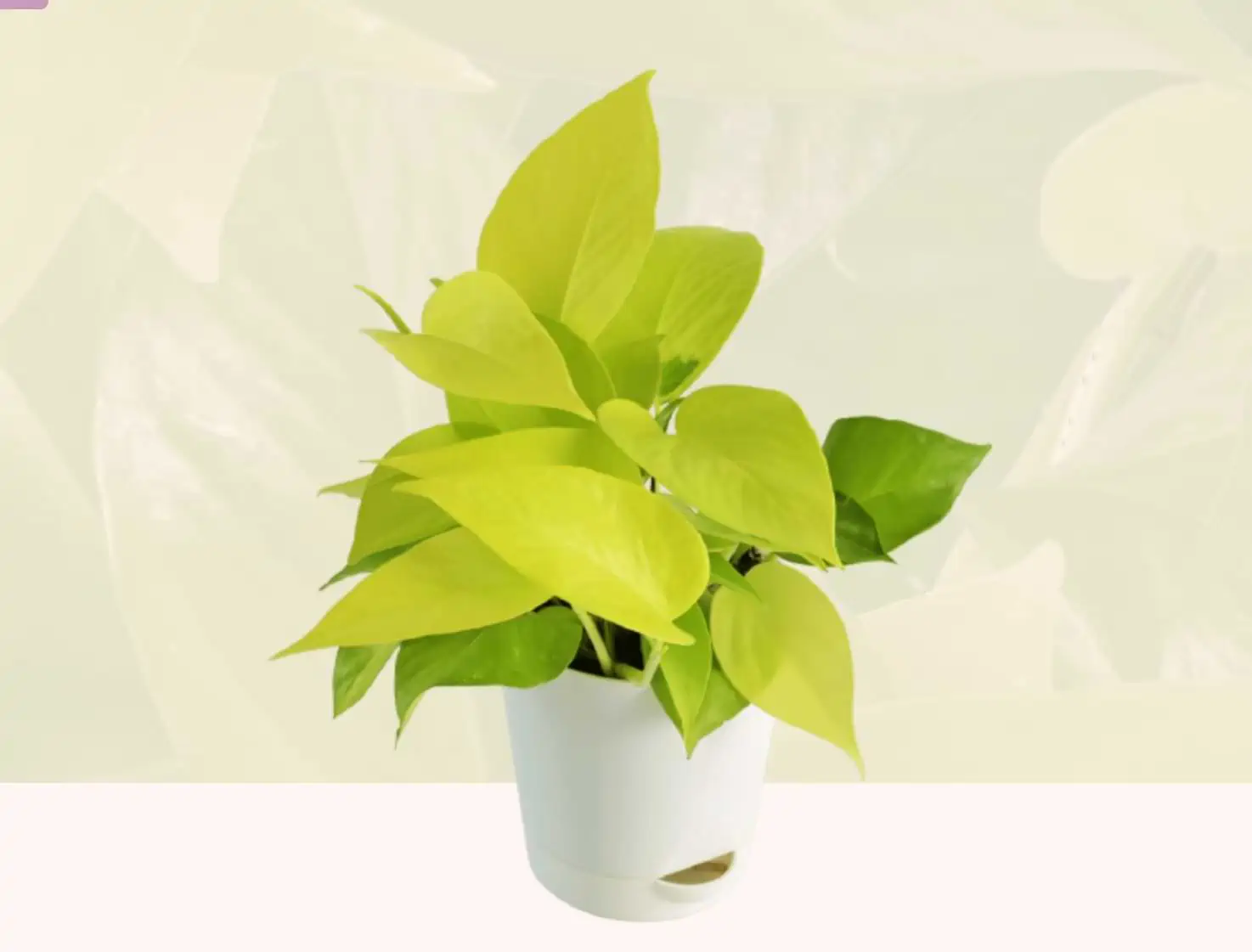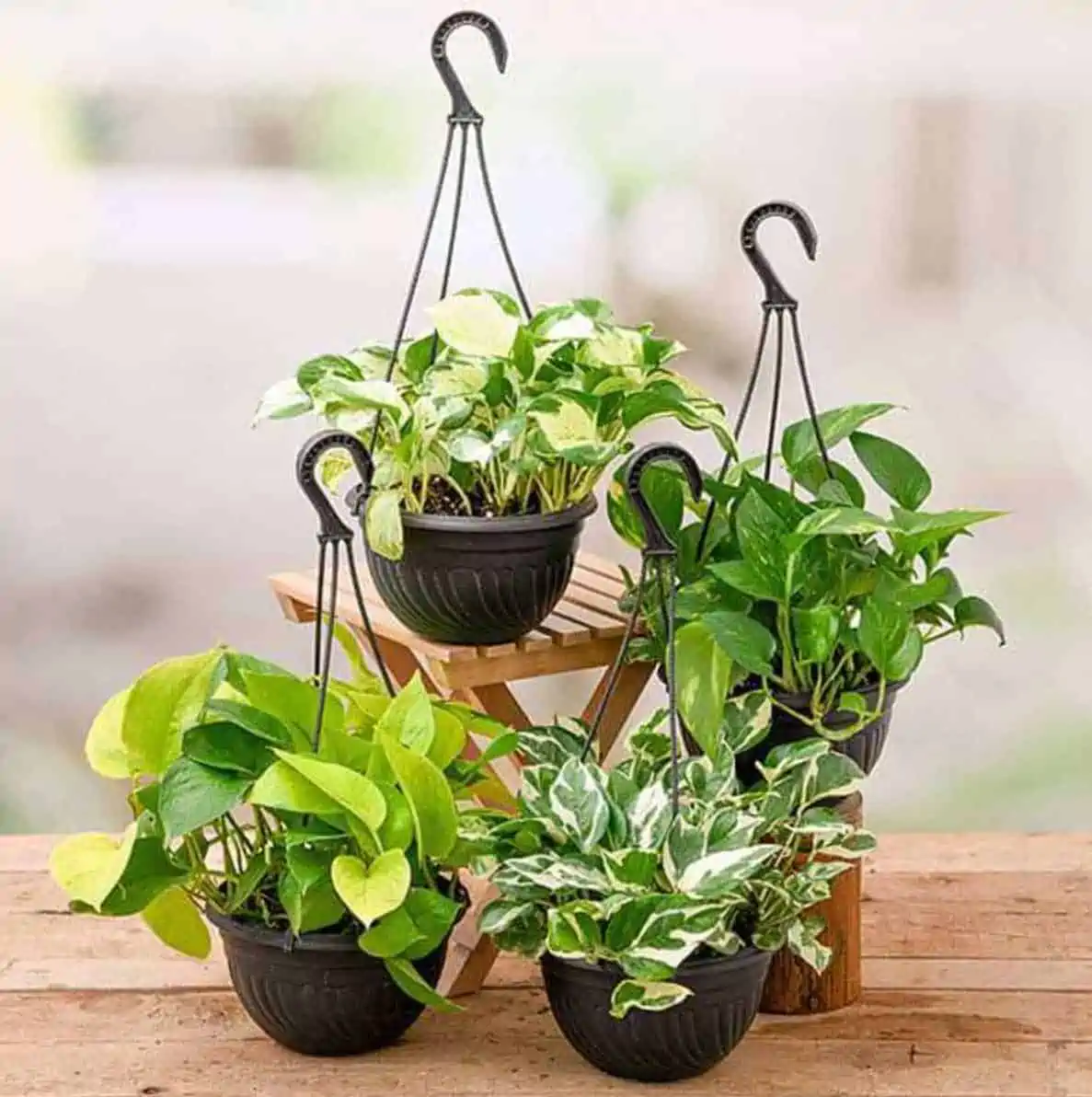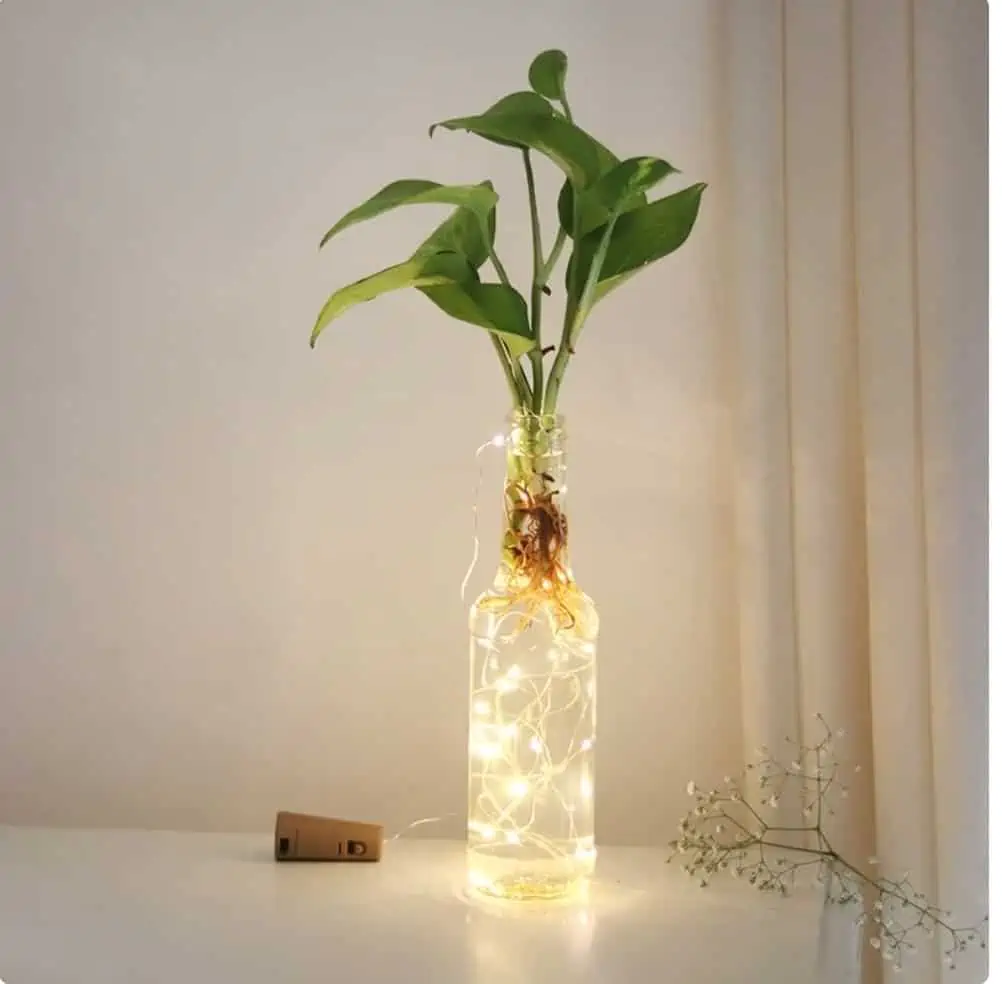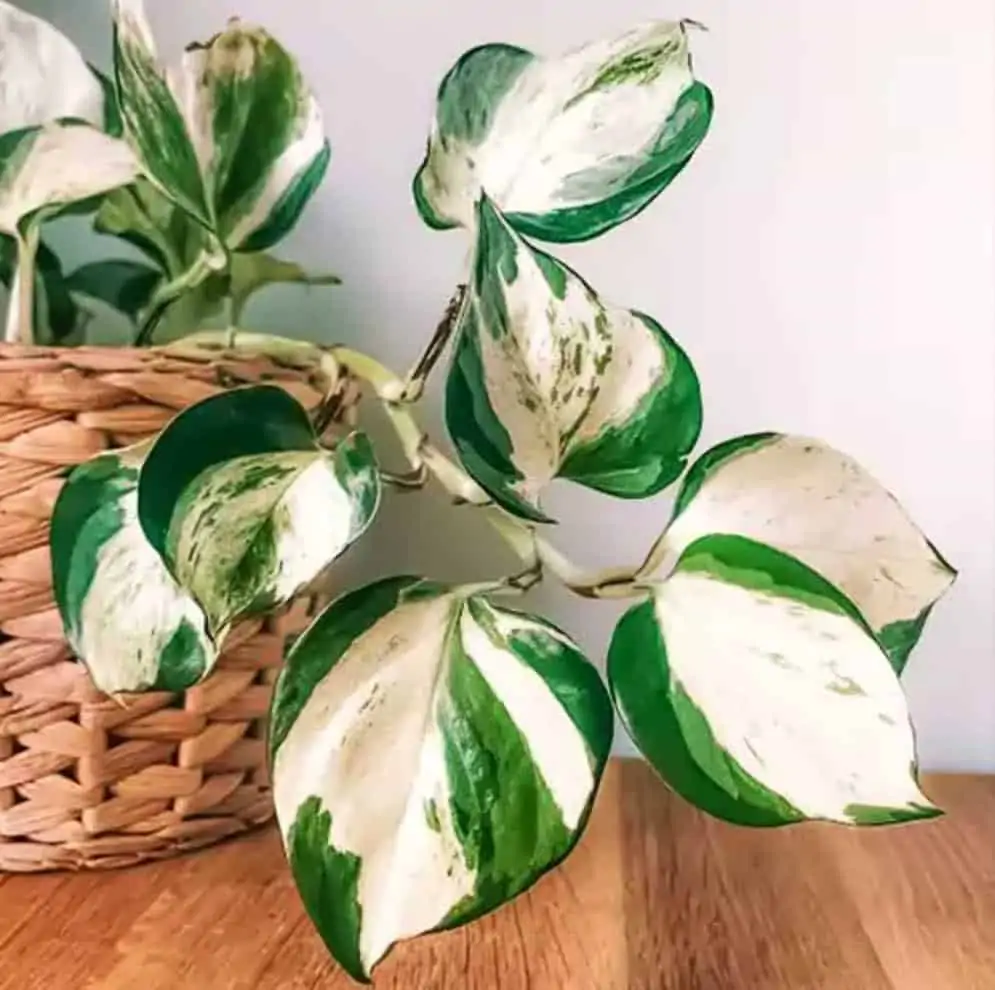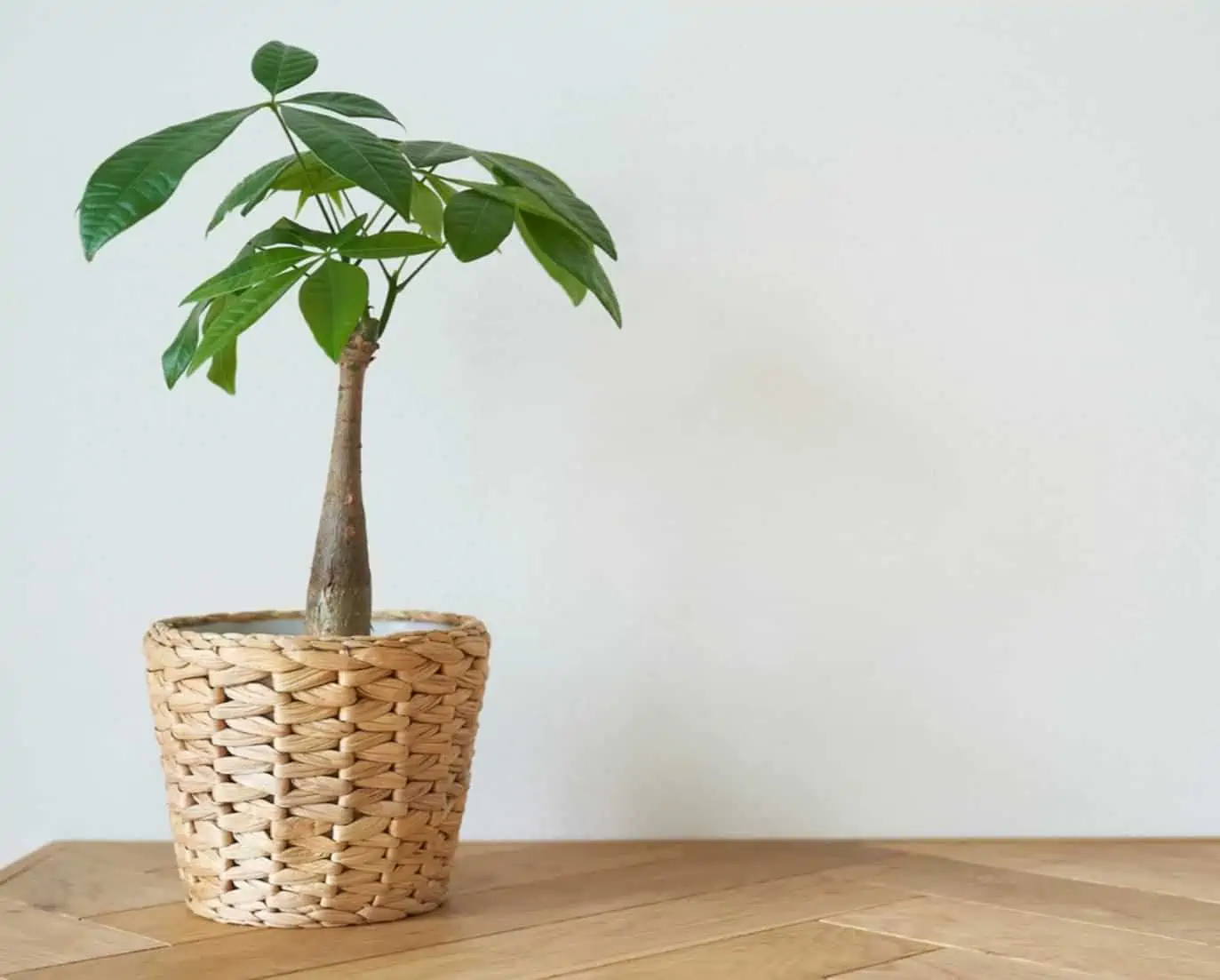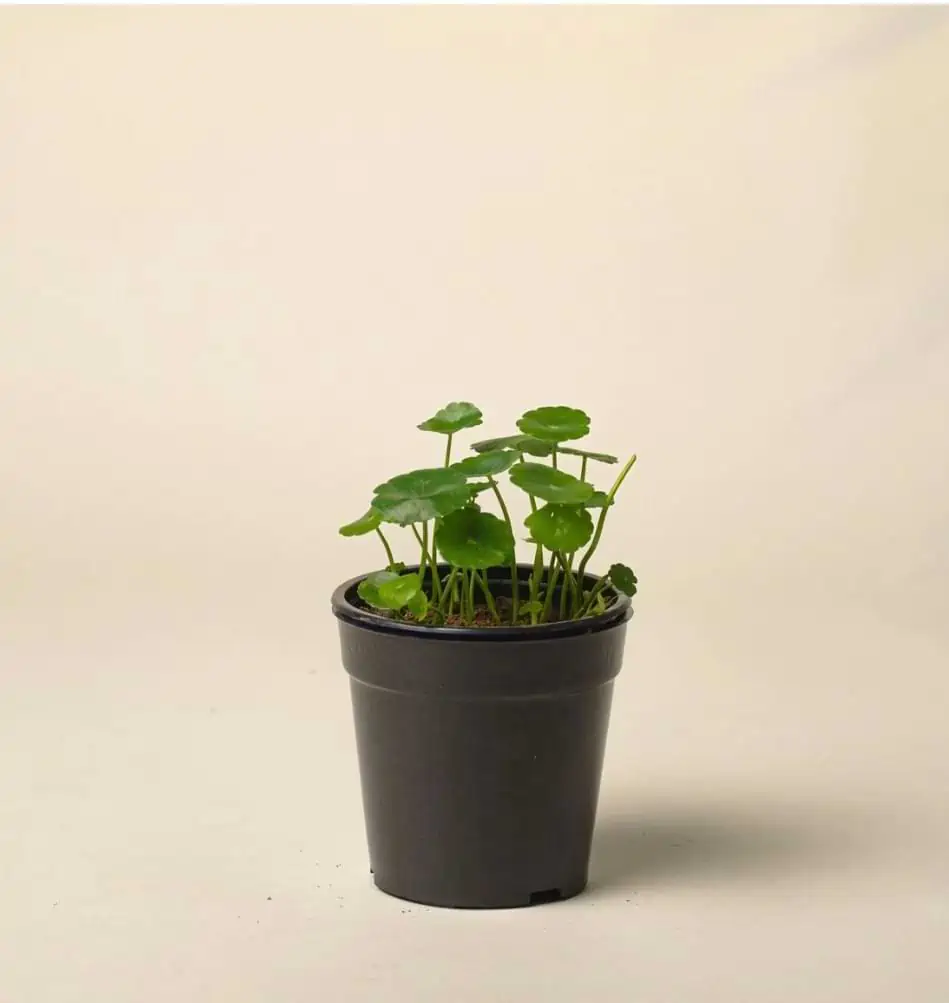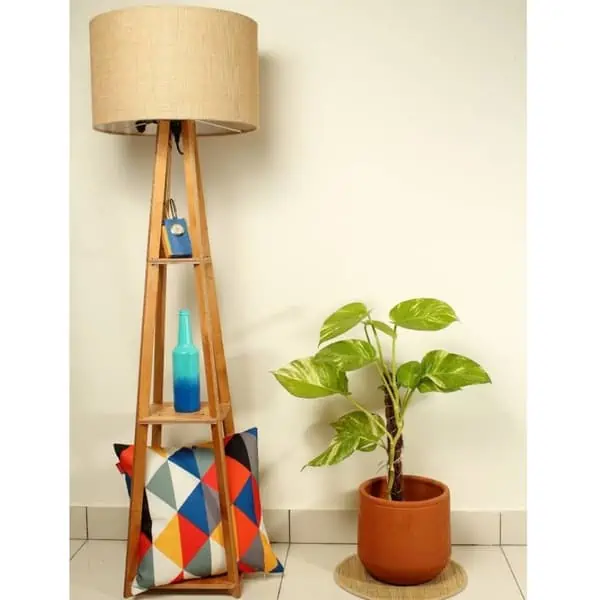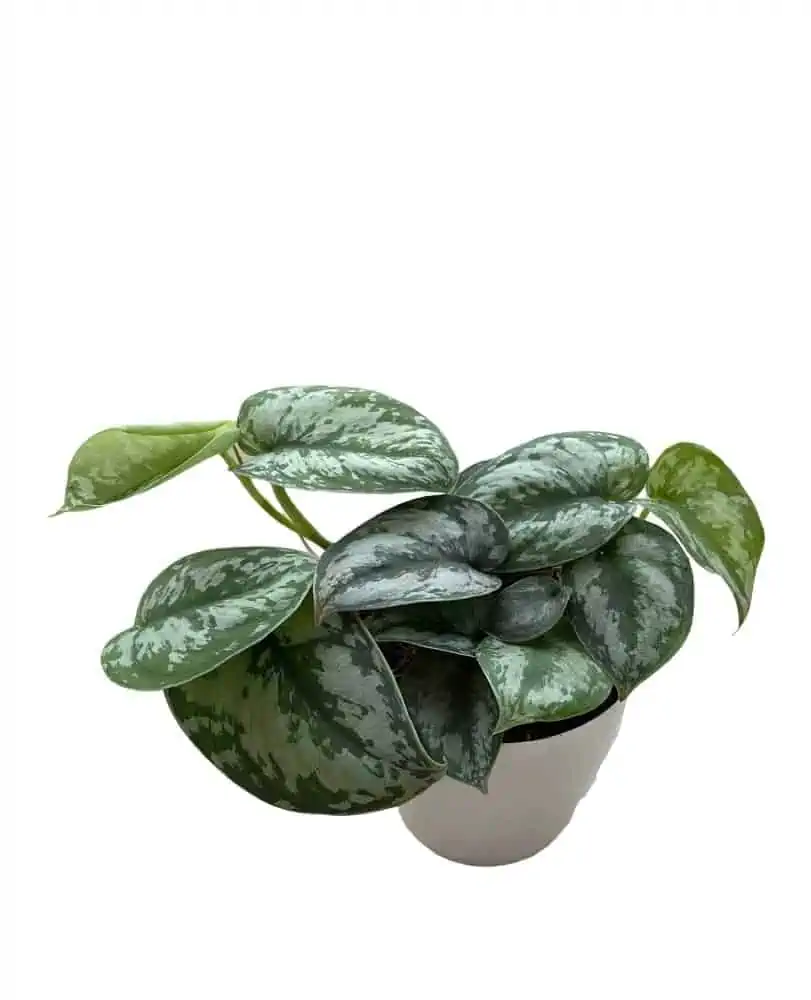The money plant is one of the most popular houseplants and often the first choice for a new plant parent. It is an evergreen climber that can grow in both soil and water. It can also tolerate extreme temperature changes and climate conditions, making it an excellent choice for Indian homes. A money plant is a highly adaptable and low-maintenance plant that you can’t simply kill, whether you have a green or brown thumb! It is a member of the Araceae family, which includes over 100 genera of plant species. If you want to add an oxygen-boosting money plant to your space or browse some aesthetic vine images, you have come to the right place! Below is a comprehensive guide about money plants, including their benefits, Vastu positioning, types, simple growing tips in water as well as beautiful decor images. So, keep reading to find your plant solution!
Contents
- 1 Why is it called a money plant?
- 2 Benefits of money plant
- 3 Money plant positioning guide according to Vastu Shastra
- 4 How to grow money plants in water?
- 5 How to take care of your money plant?
- 6 Types of money plant with images
- 7 25+ Money plant decor ideas and inspiration images
- 8 Buy gorgeous money plants online in India here!
- 8.1 Ferns and Petals, Golden Pothos in Imported Green Pot
- 8.2 Ugaoo, Epipremnum Aureum
- 8.3 Nurserylive, 4 Pothos Hanging in Baskets
- 8.4 Floweraura, Pothos LED Bottle
- 8.5 Nursery Nisarga, Manjula Pothos
- 8.6 INNTINN, Pachira Money Tree
- 8.7 Farmerr, Copper Coin Plant
- 8.8 Nestreeo, Swiss Cheese Plant
- 8.9 Half Cute, Big Leaf Pothos
- 8.10 Paudhaa, Satin Pothos
- 9 Conclusion
- 10 Decor items for home to accessorize every room (29+ buying options)
Why is it called a money plant?
The leaves of the plant are fashioned like coins and are round, flat, heart-shaped, dark green, and plump. Thus, it is commonly called a money plant and is also known as Golden Pothos, Devils Ivy, and Devils Vine. A common legend regarding the origins of this plant features a poor guy from Taiwan. He was in desperate need of help and prayed to God for financial aid. Right then, he discovered a plant in his garden and believed that the answer to all his problems was in the plant. That plant produced seeds, nuts, and additional vines as a consequence of his prayers and care. He was able to solve his financial problems by selling those plants and making money.
Thus, even now, Pothos are sometimes offered as gifts to friends, family, and relatives in the hopes of bringing them good fortune and success.
| Also see: Bonsai tree: Guide to grow top 12 plant species (+Buying options) |
Benefits of money plant
1. Purifies air: Money plants bring significant benefits to health by eliminating toxins like benzene, carbon monoxide, formaldehyde, and xylene from indoor air. The air in a room with any type of money plant is said to have more oxygen, which makes breathing easier and benefits your health.
2. Reduces anxiety: Having this plant at home relieves stress in people and has a calming effect. It helps to prevent disputes, anxiety, and sleep issues.
3. Brings prosperity & wellness: Each of the plant’s five leaves represents one of Feng Shui’s five elements: earth, water, fire, metal, and wood. These factors have the ability to attract wealth into one’s life.
4. Aids relationships & friendships: The heart-shaped leaves of the plant offer love, joy, and happiness to the family. It also aids in the mending of broken relationships and the strengthening of family bonds.
5. Neutralises cabin fever & other confinement syndromes: By absorbing bad energies from the surrounding, a money plant can benefit to reduce the symptoms of Sick Building Syndrome. This green plant gives off positive energy and helps to keep diseases at bay.
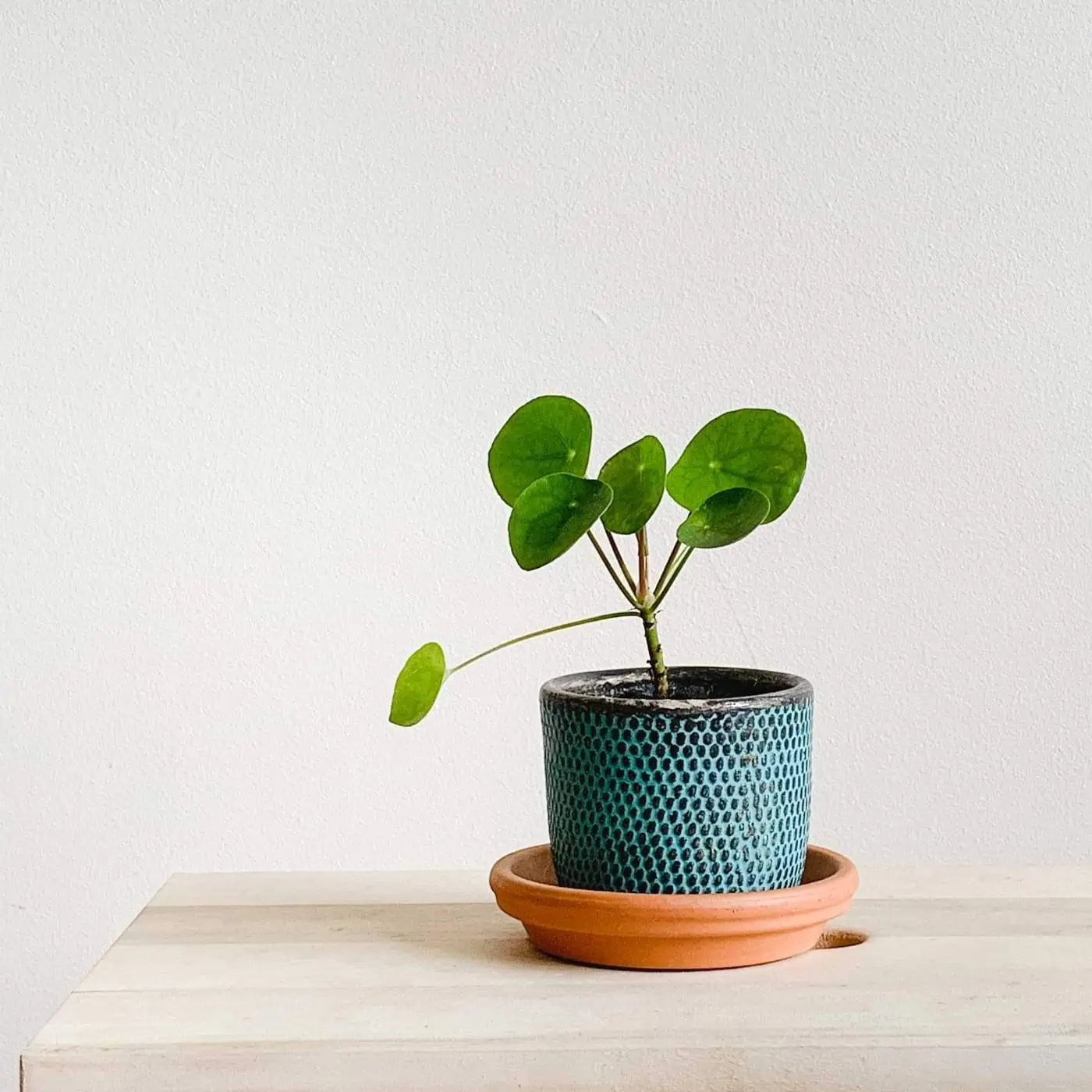
Image Source: Unsplash (Yu Xuan Lee)
Money plant positioning guide according to Vastu Shastra
According to Vastu principles, money plants should be positioned towards the house’s southeast or north entrance. For the money plant to have a beneficial impact on your life, it must be placed correctly. Below are simple tips on positioning your money plant in different areas of your home. So, follow these to attract the best energies in your space.
Living Room: According to several Vastu gurus, a money plant of any type should be kept in the southeast corner of the living room to attract luck and fortune. This direction is dominated by the planet Venus and Lord Ganesha, who represent fortune and luck in Hindu mythology.
Bedroom: In the bedroom, these plants can be placed on the left or right side of the bed, but not near the footrest or headrest. Placing a money plant in the bedroom helps to prevent conflicts as well as sleep difficulties. According to Vastu, placing the plant against the north or east walls, or in the northeast corner, will result in financial loss, health problems, and confrontations. This is because Jupiter and Venus both rule the northeast, they are incompatible with one another and may cause losses.
Bathroom: Money plants thrive in humid environments, such as bathrooms. According to Vastu, keeping a money plant in a bathroom is beneficial. If your bathroom receives a lot of direct or indirect sunlight, you can easily maintain it. The East, South, North, and South-East are the best directions for placing the money plant in the bathroom.
| Also see: 21 Affordable large planter & pot designs you must buy online! |
Basic do’s and don’ts
As money plants can absorb radiation, they can be placed near televisions, laptops, and Wi-Fi routers. Sharp corners in the home, according to Vastu, are also a cause of tension and negativity. Money plants can be placed in corners to counteract the negative effects and reduce stress at home. Money plants, on the other hand, should never be kept in the east-west direction of the house or room, as this might cause financial issues, conflicts, and strife amongst married couples.
How to grow money plants in water?
Many people choose to grow money plants in a bottle of water and keep it near the window, where it beautifully creeps up the glass. Here is a simple four-step guide for growing money plants in water.
1. Take a glass container, preferably one that is transparent, so you can easily monitor the new plant’s root development. However, you can easily switch to a dark-coloured vase to block the light and prevent algae growth later.
2. Fill it up with clean, fresh water. These plants also thrive in city water. If the water contains chlorine, leave it alone for at least 12 hours to allow the chemical to dissipate. After that, you can pour this water into the container.
3. You can add fertiliser to this jar before putting the plant in it. This is an optional step but it will stimulate the plant to develop faster. You can use a 1/6 balanced quantity of strengthening all-purpose fertiliser.
4. Your jar is now ready for the plant! Place the plant in the water from the cut side down, making sure there are no leaves on the lower end and that the nodes are submerged. Now, just wait for two weeks to see the roots’ growth, and Voila! You have successfully planted a money plant in water.
| Also see: Grow gorgeous Dahlias with these tips for A+ home decor (Buy now!) |
How to take care of your money plant?
Water
This plant is an exceptional plant because it can flourish when properly watered or submerged. It can survive under-water, but at the same time, over-watering can also stunt its growth. Watering a money plant once every seven to ten days is ideal for the summer because the soil must get dry between watering sessions. However, the watering interval should not be so long that the soil begins to split. In this way, one can feel the dryness of the topsoil and decide when to water it again. Only spritz the leaves and water thoroughly once every two to three weeks during the winter months.
Sunlight
These plants thrive in a partially sunny or partially shady environment. Although this plant can withstand a lot of sunlight, it is important to remember that blazing rays will burn the leaves. In order to save money on plant care, choose a shady yet bright location on the lawn, terrace, garden, or indoor space, this works for almost all types of indoor plants.
Fertilizer
Pothos can be sprinkled once a month while being watered. When applying fertilizer, read the manufacturer’s instructions carefully and apply only the amount specified. Another thing to keep in mind is that fertilizers should only be administered in the evening because sunlight might burn the roots. Avoid using fertilizers throughout the winter months.
Repotting
These need to be repotted every three years on average. Choose containers with good drainage holes and line the bottom with rocks or gravel when repotting. While some root development can be pulled back, make sure not to cut off more than 25% of the roots. Repotting is best done in the early spring season.
Pests
Aphids and mealybugs are the most prevalent insects that attack Pothos plants. While both are inconvenient, neither will harm your tree if you respond quickly. Insecticidal soap mixed with warm water can help remove both sorts of bugs.
Types of money plant with images
-
Golden Money Plant. Image Source: Ropan
-
Split Leaf Money Plant. Image Source: Real Estate- Property Review
-
Marble Queen Money Plant. Image Source: Maatiwala
-
Marble Prince Money Plant. Image Source: Winni
-
Silver Money Plant. Image Source: Etsy
-
Swiss Cheese Money Plant. Image Source: Gardening Know How
-
Big Leaf Money Plant. Image Source: Treeseller.com
-
Jade Plant. Image Source: Gardener Report
-
Neon Money Plant. Image Source: Cape Gazette
-
Chinese Money Plant. Image Source: Pistils Nursery
25+ Money plant decor ideas and inspiration images
-
1.Image Source: Houseplantww.my.id
-
2.Image Source: trendspot
-
3.Image Source: Countryliving
-
4.Image Source: Reddit
-
5.Image Source: Gaderningknowhow
-
6.Image Source: Growinganything
-
7.Image Source: Ubuy
-
8.Image Source: 6sqft
-
9.Image Source: Vastumangal
-
10.Image Source: Floweraura
-
11.Image Source: 6sqft
-
12.Image Source: Krishnaleeds (Pinterest)
-
13.Image Source: Patch Plants
-
14.Image Source: Rojar aur Nirman
-
15.Image Source: Elze Bee
-
16.Image Source: Aerify Plants
-
17.Image Source: Instructables
-
18.Image Source: Linssay (Pinterest)
-
19.Image Source: Wolf’s den pottery
-
20.Image Source: UK Houseplants
-
21.Image Source: The nunhead gaderner
-
22.Image Source: Simta Chamuha
-
23.Image Source: simplelivingnc
-
24.Image Source: Mylargebox
-
25.Image Source: Atap.co
-
26.Image Source: Planthillnursery
-
27.Image Source: Cementify
Buy gorgeous money plants online in India here!
Ferns and Petals, Golden Pothos in Imported Green Pot
| B U Y H E R E |
Ugaoo, Epipremnum Aureum
| B U Y H E R E |
Nurserylive, 4 Pothos Hanging in Baskets
| B U Y H E R E |
Floweraura, Pothos LED Bottle
| B U Y H E R E |
Nursery Nisarga, Manjula Pothos
| B U Y H E R E |
INNTINN, Pachira Money Tree
| B U Y H E R E |
Farmerr, Copper Coin Plant
| B U Y H E R E |
Nestreeo, Swiss Cheese Plant
| B U Y H E R E |
Half Cute, Big Leaf Pothos
| B U Y H E R E |
Paudhaa, Satin Pothos
| B U Y H E R E |
Conclusion
A money plant is a great option to start your plant parent journey since it is so adaptable and easy to maintain. We cannot emphasise enough the benefits that the money plant has, not to mention its numerous types! You can decorate your house with not one but several different species of money plant as shown in the above images. Whether indoors, outdoors, in water, or in soil, Pothos are attractors of good vibes and energy if placed correctly. So, to reap the best benefits from this plant, you must follow the Vastu tips mentioned above. Apart from this, there is hardly anything else you need to do for this plant as it is not care-intensive in nature. A little water and a little sunlight are all it needs to grow into luscious green vines.
So, feel free to save these money plant decor images to decorate your home later with the above-mentioned selections of Pothos available online.
*The featured image used in this article is from Unsplash (Glenn Theunissen)
Decor items for home to accessorize every room (29+ buying options)
What can you do if you’ve maxed out your creative quotient while designing your home? The quickest and most effective way i








